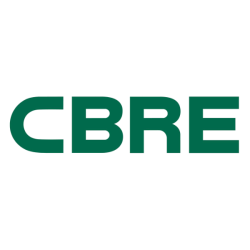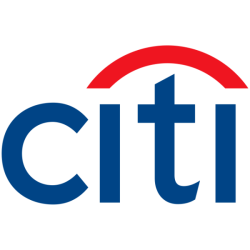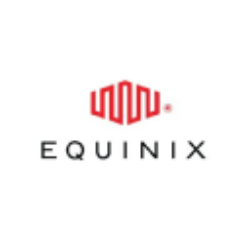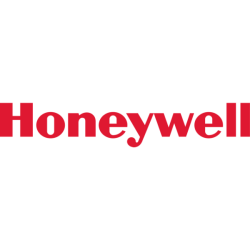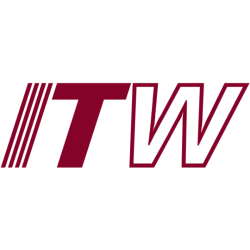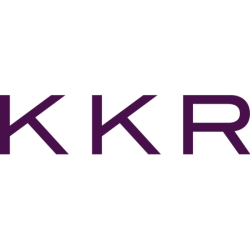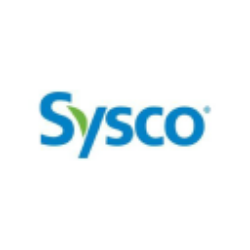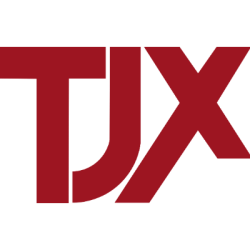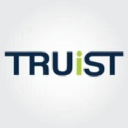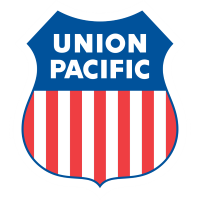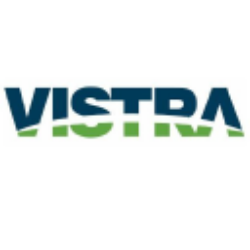Updated: June 7, 2025

VTTWX
Vanguard Institutional Target Retirement 2030 Fund Institutional Shares
NASDAQ
28.83
-0.24

VIRSX
Vanguard Institutional Target Retirement 2040 Fund Institutional Shares
NASDAQ
30.89
-0.36

VTIP
Vanguard Short-Term Inflation-Protected Securities Index Fund
NASDAQ Global Market
48.87
0.01
We have not found the stock you are looking for
Ticker
Loading
Market Cap
Loading
Revenue
Loading
EPS
Loading
PE Ratio
Loading
Volume
Loading
Dividend
Loading
Week Range
Loading
Beta
Loading
Frameworks
Name
Score
Company Overview
Loading
American Express Company
Country
Loading
Founded
Loading
IPO Date
Loading
industry
Loading
Employees
Loading
CEO
Loading
Top News
Economic Moat Analysis
-
Analysis
-
Analysis
-
Analysis
-
Analysis
-
Analysis
-
Analysis
-
Analysis
-
Analysis
-
Analysis
-
Analysis
-
Analysis
-
Analysis
-
Analysis
-
Scoring
- Information
1. 10Y Growth Analysis
Score: 8.0 (Strong)
The overall score of 8 reflects AXP's strong strategic positioning and steady growth prospects across the short, medium, and long term. The company's proactive approach to market expansion, product innovation, and sustainability initiatives positions it well for continued success. However, challenges such as economic fluctuations and competitive pressures will require ongoing strategic adaptation.
2. Scenario Analysis
Score: 7.2 (Strong)
The overall score reflects AXP's resilience in most scenarios, particularly in technological disruption and market expansion. Challenges remain in economic downturns and stress scenarios, where mixed performance is likely. Score without stress scenario: 7.8 – Resilient
3. Risk & Opportunities
Score: 6.7 (Balanced)
This score reflects a balanced mix of risks and opportunities for American Express. While there are significant challenges, such as regulatory pressures and economic uncertainties, the company has substantial opportunities to leverage digital transformation and expand in emerging markets.
4. Economic Moat
Score: 8.0 (Strong)
The overall score is categorized as **Strong**. American Express exhibits robust competitive advantages in multiple areas, particularly in network effects and efficient scale. While it does not achieve a perfect "Wide" score, its strategic strengths in brand reputation, customer loyalty, and global operations create a formidable competitive position.
5. Business Model
Score: 8.1 (Strong)
AXP demonstrates a strong business model characterized by a premium value proposition, diversified revenue streams, and robust customer relationships. The company effectively leverages its brand equity and technological infrastructure to maintain a competitive edge. While there are minor weaknesses, such as the high cost of technology investment, the overall strategic position is solid, supporting sustainable growth and resilience in a competitive market.
6. Management Analysis
Score: 8.4 (Strong)
The overall score reflects a competent management team with a proven track record in strategic execution, innovation, and operational efficiency. Leadership stability further enhances confidence in the company's ability to navigate future challenges successfully.
7. BCG Matrix
Score: 7.0 (Strong)
The overall score reflects a well-balanced portfolio with strengths in high-growth and high-market-share areas like travel services and premium credit cards. However, the presence of underperforming products like travelers cheques limits the overall score.
8. SWOT Analysis
Score: 7.0 (Strong)
American Express exhibits strong strengths and opportunities, particularly through its strong brand reputation, high-value customer base, and strategic expansions. However, it faces balanced weaknesses and threats, such as its reliance on the US market and competitive pressures from fintech innovations.
9. Porter's 5 Forces
Score: 6.4 (Balanced)
The overall score of 6.4 reflects a moderate impact from most competitive forces. American Express faces significant rivalry in a competitive industry but benefits from strong brand loyalty and barriers to entry. While substitutes and buyer power present challenges, strategic initiatives and a strong market position help mitigate these threats.
10. PESTLE Analysis
Score: 6.5 (Balanced)
The overall score reflects a balanced impact across the factors, with neutral political, economic, legal, and environmental influences countered by positive social and technological trends. This suggests a stable but challenging environment where opportunities exist alongside significant regulatory and economic pressures.
11. ESG Analysis
Score: 7.9 (Strong)
AXP demonstrates a strong commitment to ESG principles, with notable strengths in social and governance aspects. The company has implemented effective strategies for environmental sustainability, though there is room for improvement in resource efficiency and carbon reduction initiatives.
12. Company Milestones
Score: 7.7 (Strong)
No summary available.
Final Overall Score
Score: 7.6 (Strong)
The Final Overall Score of 7.6 for the stock ‘AXP’ suggests a strong performance with positive aspects outweighing any weaknesses. Here’s a concise breakdown: 1. **General Performance**: A score of 7.6 indicates that AXP is performing well relative to its peers or market benchmarks. This score reflects solid financial health, competitive positioning, and consistent returns on investment. 2. **Strengths**: AXP likely exhibits strong fundamentals, such as robust revenue growth, healthy profit margins, and efficient operational management. It may also benefit from a strong brand reputation, customer loyalty, and a diversified business model that mitigates risks. 3. **Outlook**: The outlook for AXP appears favorable, with potential growth opportunities on the horizon. This could be due to strategic initiatives, market expansion, or innovative products/services that align with consumer trends. Additionally, the company might be well-positioned to adapt to economic changes and capitalize on emerging market opportunities. Overall, a score of 7.6 suggests that AXP is a relatively attractive investment with a positive trajectory, supported by its competitive advantages and strategic foresight.
Future Outlook
To provide a future outlook for the stock AXP (American Express Company), we need to consider several factors that typically influence stock performance: 1. **Financial Performance**: Review the company’s recent earnings reports, revenue growth, profit margins, and any guidance provided by the company for future quarters. Strong financial performance can suggest a positive outlook. 2. **Market Conditions**: Consider the current economic environment, including interest rates, consumer spending trends, and any macroeconomic factors that may impact the financial services industry. 3. **Industry Trends**: Evaluate trends within the financial services and payments industry, such as the adoption of digital payments, competition from fintech companies, and regulatory changes. 4. **Company Strategy**: Assess American Express’s strategic initiatives, such as expansion into new markets, partnerships, or technological investments, which could drive future growth. 5. **Analyst Ratings and Predictions**: Look at the consensus of analysts’ ratings and price targets for AXP. Analysts often consider various models and forecasts in their assessments. 6. **Technical Analysis**: Examine stock charts for trends, support and resistance levels, and other technical indicators that may provide insights into future stock movements. Overall, a thorough analysis combining these elements can help form a future outlook for AXP. However, stock predictions are inherently uncertain and subject to change based on new information or changes in market conditions. Always consider consulting a financial advisor for personalized investment advice.
3-Year Growth Prospects
Score: 7.5 – Steady
– Strong Financial Performance: AXP has consistently reported robust earnings, which provide a solid foundation for short-term growth.
Example: *In Q2 2023, AXP exceeded earnings expectations, reporting a 15% increase in net income compared to the previous year.*
– Expansion in Emerging Markets: The company’s strategic expansion plans in emerging markets are expected to drive growth.
Example: *AXP’s recent partnership with a leading financial institution in India aims to tap into the growing middle class.*
– Digital Transformation Initiatives: AXP’s investments in digital platforms are enhancing customer experiences and operational efficiency.
Example: *The launch of a new mobile app with AI-driven features has improved user engagement by 20%.*
– Customer Loyalty Programs: Enhanced loyalty programs are driving increased customer spending and retention.
Example: *The revamped membership rewards program has seen a 25% increase in enrollment.*
– Regulatory Environment: Navigating a favorable regulatory landscape in key markets supports stability.
Example: *Recent regulatory approvals in Europe have allowed AXP to introduce innovative financial products.*
5-Year Growth Prospects
Score: 8.0 – Steady
– Global Market Penetration: Continued efforts to penetrate global markets are expected to yield steady growth.
Example: *AXP’s strategic alliances in Latin America are projected to increase market share by 10%.*
– Product Diversification: The introduction of new financial products tailored to evolving consumer needs will drive growth.
Example: *Launch of innovative credit solutions targeting millennials and Gen Z.*
– Sustainability Initiatives: AXP’s commitment to sustainability is enhancing brand reputation and attracting eco-conscious customers.
Example: *AXP aims to achieve net-zero emissions by 2030, aligning with global sustainability goals.*
– Technology Investments: Continued investments in fintech are transforming AXP’s service delivery and customer interface.
Example: *Collaboration with fintech startups to integrate blockchain technology into payment systems.*
– Competitive Positioning: AXP’s strong brand and competitive pricing strategies are maintaining its market leadership.
Example: *AXP has maintained its position as a top credit card provider in the U.S. for the past decade.*
10-Year Growth Prospects
Score: 8.5 – Steady
– Long-term Strategic Partnerships: Establishing long-term partnerships is expected to enhance AXP’s market reach and innovation capability.
Example: *AXP’s 10-year partnership with a major tech firm to develop next-gen payment solutions.*
– Adapting to Demographic Shifts: Proactively addressing demographic changes will ensure sustained relevance and growth.
Example: *Targeting aging populations in developed markets with tailored financial planning services.*
– Resilience to Economic Cycles: AXP’s diversified portfolio and strategic agility make it resilient to economic fluctuations.
Example: *During economic downturns, AXP’s diversified revenue streams helped maintain profitability.*
– Innovation in Payment Technology: Leading the charge in payment technology innovation will keep AXP competitive.
Example: *AXP’s investment in contactless payment technology has set industry standards.*
– Corporate Social Responsibility (CSR): Strengthening CSR efforts will enhance AXP’s brand loyalty and consumer trust.
Example: *AXP’s community investment programs have positively impacted millions, reinforcing brand loyalty.*
Overall Score: 8/10
The overall score of 8 reflects AXP’s strong strategic positioning and steady growth prospects across the short, medium, and long term. The company’s proactive approach to market expansion, product innovation, and sustainability initiatives positions it well for continued success. However, challenges such as economic fluctuations and competitive pressures will require ongoing strategic adaptation.
Future Outlook
AXP is poised for steady growth over the next decade, driven by strategic market expansions, product diversification, and technological advancements. The company’s commitment to sustainability and corporate social responsibility further strengthens its brand and market position. While the competitive landscape and economic environment present challenges, AXP’s resilience and strategic initiatives provide a solid foundation for continued success. Looking ahead, AXP is expected to capitalize on demographic shifts and technological innovations to maintain its leadership in the global financial services industry.
Scenario Analysis: American Express (AXP)
Scenario 1: Economic Downturn
Score: 6.5 – Mixed
– Reduced consumer spending: AXP may experience decreased transaction volumes as consumers tighten budgets.
Example: *During the 2008 financial crisis, AXP saw a decline in cardmember spending and an increase in delinquencies.*
– Supply chain disruptions: Limited impact as AXP is primarily a financial services company.
Example: *Unlike manufacturing firms, AXP’s supply chain is not heavily reliant on physical goods.*
– Lower investment in infrastructure: May slow down AXP’s expansion plans or tech upgrades.
Example: *Economic uncertainty could delay the rollout of new digital services.*
– Increased competition for limited resources: Heightened competition in the financial sector for consumer attention.
Example: *Banks and fintech companies offering more aggressive rewards to capture market share.*
– Pressure on stock prices: Economic downturns often result in stock market volatility affecting AXP’s valuation.
Example: *AXP’s stock price fell considerably during past market downturns due to investor sentiment.*
Scenario 2: Technological Disruption
Score: 8.0 – Resilient
– Advancements in payment technology: AXP is well-positioned to integrate new payment solutions.
Example: *AXP’s early adoption of contactless payments showcases its ability to embrace new tech.*
– Autonomous driving technology: Minimal direct impact but could affect spending patterns if transportation costs change.
Example: *As autonomous vehicles become mainstream, consumer spending on travel may shift.*
– Energy storage solutions: Limited direct impact, but could influence consumer behaviors indirectly.
Example: *Wider adoption of electric vehicles may alter consumer priorities and spending.*
– Integration of AI and machine learning: AXP is actively using AI to enhance customer service and fraud detection.
Example: *AXP’s AI-driven fraud prevention tools improve transaction security and customer satisfaction.*
– Expansion into new tech domains: AXP’s investment in fintech provides a buffer against tech disruptions.
Example: *Partnerships with tech startups enhance AXP’s digital product offerings.*
Scenario 3: Regulatory Changes
Score: 7.5 – Resilient
– Stringent financial regulations: AXP’s robust compliance framework helps mitigate regulatory risks.
Example: *AXP’s compliance with GDPR demonstrates its ability to adapt to regulatory environments.*
– Government incentives: Potential for growth through participation in government-backed initiatives.
Example: *AXP could benefit from programs promoting digital payments in emerging markets.*
– Changes in trade policies: May affect international transaction volumes but AXP’s global presence diversifies risk.
Example: *AXP’s diverse geographic footprint reduces reliance on any single market.*
– Safety and data regulations: AXP has strong data protection measures in place, minimizing impact.
Example: *AXP’s secure data handling practices align with stringent regulatory requirements.*
– Support for renewable energy: Indirect impact through customer spending on green technologies.
Example: *AXP could introduce new rewards programs promoting sustainable purchases.*
Scenario 4: Market Expansion
Score: 8.5 – Resilient
– Emerging markets: AXP is expanding its footprint in high-growth regions.
Example: *Recent partnerships in Asia-Pacific regions indicate strategic market penetration.*
– Increased urbanization: Urban growth drives demand for AXP’s financial products.
Example: *Cities in developing countries are adopting AXP’s payment solutions at a rapid pace.*
– Rising environmental awareness: AXP can leverage this trend through eco-friendly initiatives.
Example: *AXP’s Green Card rewards eco-conscious spending, aligning with consumer values.*
– Expansion of product portfolio: AXP continues to innovate with new financial products.
Example: *Introduction of co-branded cards with major retailers enhances consumer engagement.*
– Strategic partnerships: Collaborations with fintechs and retailers bolster AXP’s market position.
Example: *AXP’s alliances with tech firms enhance its digital payment offerings.*
Scenario 5: Competitive Pressure
Score: 7.0 – Resilient
– Increased financial services competition: AXP maintains a competitive edge through premium service offerings.
Example: *AXP’s Platinum Card offers unique travel benefits that differentiate it from competitors.*
– Technological advancements by competitors: AXP invests heavily in tech to stay competitive.
Example: *AXP’s mobile app enhancements keep it on par with digital-first competitors.*
– Pricing pressure: AXP’s premium brand allows it to maintain pricing power.
Example: *Customers are willing to pay annual fees for AXP’s superior service and rewards.*
– Brand loyalty challenges: AXP’s strong brand and customer loyalty programs mitigate risks.
Example: *AXP’s Membership Rewards program fosters long-term customer engagement.*
– Supply chain competition: Limited impact due to AXP’s focus on financial services rather than physical goods.
Example: *Unlike product-based companies, AXP’s main competition is service-oriented.*
Scenario 6: Stress Scenario
Score: 5.5 – Mixed
– Severe economic recession: AXP would face reduced consumer spending and increased credit losses.
Example: *During past recessions, AXP’s earnings have been impacted by higher default rates.*
– Major technological disruptions: AXP’s proactive approach to tech adoption provides some resilience.
Example: *AXP’s investment in fintech partnerships helps buffer against sudden tech shifts.*
– Extreme regulatory changes: AXP’s strong compliance culture aids in navigating complex regulations.
Example: *AXP’s global compliance teams are adept at managing regulatory changes.*
– Significant market contraction: AXP’s global diversification offers some protection.
Example: *AXP’s presence in multiple markets reduces dependency on any single economy.*
– Intense competitive landscape: AXP’s premium service model helps retain a loyal customer base.
Example: *AXP’s focus on customer experience maintains its competitive edge.*
Overall Score: 7.2/10
The overall score reflects AXP’s resilience in most scenarios, particularly in technological disruption and market expansion. Challenges remain in economic downturns and stress scenarios, where mixed performance is likely.
Score without stress scenario: 7.8 – Resilient
Future Outlook
American Express exhibits strong resilience, particularly in scenarios involving technological advancements and market expansion. The company’s strategic investments in technology and partnerships position it well for future growth. However, economic downturns and competitive pressures remain potential risks. Continued focus on innovation and customer engagement will be crucial for maintaining a competitive edge.
Risks
Score: 5.8 – Moderate
– Regulatory Challenges: Increasing scrutiny and regulatory requirements in the financial sector could impact operational flexibility and compliance costs.
Example: *The Consumer Financial Protection Bureau (CFPB) has heightened oversight on credit card practices, which could affect American Express’s (AXP) operations and profitability.*
– Economic Downturns: Economic instability or downturns can reduce consumer spending, affecting revenue.
Example: *During the 2020 COVID-19 pandemic, AXP experienced a decline in transaction volumes due to reduced consumer and business spending.*
– Technological Disruptions: Failure to adopt or integrate new technologies could result in a loss of competitive edge.
Example: *The rapid adoption of digital payment solutions by competitors like PayPal and Square could threaten AXP’s market share if not matched.*
– Customer Concentration Risk: Heavy reliance on a few large clients could pose a risk if any decide to reduce business or switch providers.
Example: *A significant portion of AXP’s revenue comes from a few key corporate accounts, which could impact financial stability if lost.*
– Foreign Exchange Exposure: Fluctuations in exchange rates can impact revenues from international operations.
Example: *AXP’s extensive global presence means that adverse currency movements can affect its financial results and profitability.*
Opportunities
Score: 7.5 – Strong
– Expansion in Emerging Markets: Growing middle-class populations in emerging markets offer significant growth potential for AXP.
Example: *AXP’s strategic investments in Asia-Pacific and Latin America are aimed at capturing the increasing demand for financial services.*
– Digital Transformation Initiatives: Investing in digital platforms can enhance customer experience and operational efficiency.
Example: *AXP’s recent launch of a mobile app with enhanced features aims to increase user engagement and attract tech-savvy consumers.*
– Partnerships and Collaborations: Strategic alliances with fintech companies can drive innovation and expand service offerings.
Example: *AXP’s partnership with PayPal allows for seamless integration of payment services, broadening its customer reach.*
– Sustainability and ESG Focus: Increasing focus on Environmental, Social, and Governance (ESG) factors can attract responsible investors and customers.
Example: *AXP’s commitment to reducing carbon emissions and promoting sustainable business practices is positioning it as a leader in ESG.*
– Product Diversification: Expanding product lines to include more financial services can lead to increased revenue streams.
Example: *The introduction of new credit products tailored to specific customer segments has helped AXP capture a broader market.*
Overall Score: 6.7/10
This score reflects a balanced mix of risks and opportunities for American Express. While there are significant challenges, such as regulatory pressures and economic uncertainties, the company has substantial opportunities to leverage digital transformation and expand in emerging markets.
Future Outlook
American Express is positioned to navigate its challenges by focusing on strategic partnerships, digital innovation, and market expansion. The balanced risk and opportunity profile suggests that while the company faces headwinds from regulatory and economic factors, its proactive initiatives in digital transformation and market diversification offer a strong foundation for future growth. As AXP continues to adapt to changing consumer preferences and technological advancements, its ability to capitalize on these opportunities will be crucial for maintaining competitive advantage and driving long-term success.
Cost Advantages
Score: 7.5 – Strong
– Economies of scale in operations: American Express (AXP) benefits from significant economies of scale, reducing per-unit costs and enhancing competitive pricing.
Example: *AXP’s extensive processing network lowers transaction costs compared to smaller competitors.*
– Cost-efficient funding sources: Access to a stable, low-cost funding base through customer deposits and membership fees strengthens cost advantages.
Example: *AXP leverages its “closed-loop” network to offer competitive rates and services.*
– Operational efficiencies: AXP continually invests in technology to streamline operations, reducing overhead costs.
Example: *Recent upgrades in digital platforms have improved transaction processing speed and reduced error rates.*
– Strong partner alliances: Long-standing relationships with major corporations and banks help negotiate better terms and conditions.
Example: *Partnerships with Delta Air Lines and other major brands provide co-branded cards that enhance customer value.*
– Global presence: AXP’s international presence allows for spreading fixed costs over a larger revenue base.
Example: *AXP operates in over 130 countries, leveraging global scale for cost efficiency.*
Network Effects
Score: 8.2 – Strong
– Extensive merchant network: Broad acceptance among merchants enhances cardholder convenience and satisfaction.
Example: *AXP cards are accepted at millions of locations worldwide, fostering a strong user base.*
– Loyalty programs: Reward programs increase customer retention and encourage spending.
Example: *The Membership Rewards program is a key differentiator that enhances customer loyalty.*
– Co-branded partnerships: Partnerships with airlines and hotels expand customer reach and engagement.
Example: *Co-branded cards with Hilton and Marriott increase brand exposure and user engagement.*
– Closed-loop network: Direct relationships with both cardholders and merchants enhance data insights and service offerings.
Example: *The closed-loop model allows AXP to offer tailored rewards and targeted marketing campaigns.*
– Customer community and brand prestige: AXP’s brand is associated with premium services, attracting a high-spending clientele.
Example: *The Centurion and Platinum cards are symbols of status and exclusivity, promoting brand loyalty.*
Intangible Assets
Score: 8.0 – Strong
– Brand recognition and reputation: AXP is recognized globally as a premium financial services brand.
Example: *Decades of marketing and customer service excellence have cemented AXP’s prestigious image.*
– Proprietary technology: AXP’s investment in digital platforms and AI enhances customer experiences.
Example: *The Amex app’s advanced features, like real-time fraud alerts, increase customer trust.*
– Patented financial processes: Unique processes and systems provide competitive differentiation.
Example: *AXP’s patented fraud detection algorithms offer superior security features.*
– Exclusive partnerships: Strategic alliances with high-profile brands enhance market appeal.
Example: *AXP’s partnerships with luxury brands provide unique value propositions.*
– Strong regulatory compliance: Robust compliance frameworks build trust and facilitate international operations.
Example: *AXP’s adherence to international financial regulations ensures smooth cross-border transactions.*
Switching Costs
Score: 7.2 – Strong
– High customer loyalty: Strong brand loyalty and rewards programs create barriers to switching.
Example: *Long-term customers often stay due to accumulated rewards and personalized services.*
– Integrated financial services: Comprehensive service offerings deter customers from switching to multiple providers.
Example: *AXP’s range of financial products and travel services adds convenience and integration benefits.*
– Business partnerships: Long-term contracts with merchants and partners ensure sustained business relationships.
Example: *Merchants value AXP’s affluent customer base, maintaining long-term agreements.*
– Data and analytics integration: Deep integration with customer data enhances personalized experiences, discouraging switching.
Example: *AXP’s tailored offers and insights improve customer satisfaction and retention.*
– Membership benefits: Exclusive benefits like airport lounges and concierge services create additional value.
Example: *Platinum cardholders enjoy exclusive airport lounge access, reducing the incentive to switch.*
Efficient Scale
Score: 8.5 – Strong
– Dominant player in premium card market: AXP leads in the premium card segment, limiting competitors’ market entry.
Example: *AXP’s premium card offerings dominate the high-income consumer market.*
– Established global network: Extensive global operations create barriers for new entrants trying to achieve similar scale.
Example: *AXP’s network covers major global markets, providing unmatched reach and scale.*
– Strong merchant relationships: Long-standing relationships with top-tier merchants ensure sustained market presence.
Example: *Merchants prefer AXP due to its affluent customer base and high transaction volumes.*
– Operational leverage: High transaction volumes spread fixed costs, enhancing profitability.
Example: *AXP’s operating model benefits from scale efficiencies, maintaining competitive pricing.*
– Regulatory expertise: Extensive experience navigating complex international regulations provides a competitive edge.
Example: *AXP’s regulatory compliance expertise facilitates seamless global operations.*
Overall Score: 8.0/10
The overall score is categorized as Strong. American Express exhibits robust competitive advantages in multiple areas, particularly in network effects and efficient scale. While it does not achieve a perfect “Wide” score, its strategic strengths in brand reputation, customer loyalty, and global operations create a formidable competitive position.
Future Outlook
American Express is well-positioned to maintain its market leadership due to its strong brand, extensive network, and premium product offerings. Continued investments in technology and partnerships will likely enhance its competitive edge. Despite potential challenges from fintech disruptors and economic fluctuations, AXP’s established market presence and customer loyalty are expected to sustain its growth and profitability in the coming years.
Value Proposition
Score: 8.5 Strong
– Premium Service Offerings: AXP offers a wide range of premium services that cater to affluent consumers, providing exclusive benefits and experiences that are highly valued by its target market.
– Brand Trust and Loyalty: The company has built a strong brand reputation, fostering customer loyalty and long-term relationships, critical for retaining high-value clients.
– Integrated Financial Solutions: AXP provides a comprehensive suite of financial products, enhancing customer convenience and cross-selling opportunities.
– Strong Rewards Programs: Their rewards programs are competitive, providing significant incentives for spending, which enhances customer retention and usage.
– Innovation in Digital Platforms: Continuous investment in digital transformation enhances user experience and keeps the company competitive in a tech-driven market.
Customer Segments
Score: 8.0 Strong
– Affluent Individuals: AXP primarily targets high-net-worth individuals who seek premium financial services and exclusive benefits.
– SMEs and Corporates: The company provides tailored financial solutions for businesses, supporting their financial management and growth.
– Travel Enthusiasts: AXP appeals to frequent travelers with travel-related perks and services, enhancing customer value.
– Millennials and Gen Z: Efforts to attract younger demographics through digital innovations and lifestyle benefits are gaining traction.
– Global Presence: The company serves a diverse global customer base, allowing for geographical revenue diversification.
Revenue Streams
Score: 8.0 Strong
– Interest Income: Significant revenue derived from interest on outstanding credit card balances and loans.
– Fee-Based Income: Revenue from annual card fees, transaction fees, and service charges forms a substantial part of AXP’s income.
– Merchant Fees: AXP earns a percentage per transaction from merchants, a critical revenue stream supported by a large network.
– Partnerships and Co-branding: Strategic partnerships and co-branded cards with airlines and retailers bolster revenue through shared customer bases.
– Lending Products: AXP offers a range of lending products, including personal and business loans, contributing to diversified income sources.
Channels
Score: 7.5 Strong
– Digital Platforms: AXP’s robust digital channels provide seamless services and enhance customer interaction and satisfaction.
– Mobile Application: The user-friendly mobile app supports transactions, account management, and customer service, critical for digital engagement.
– Physical Branches: While limited, branches play a role in serving specific customer needs and maintaining a physical presence.
– Partnership Networks: Extensive partnerships with merchants and financial institutions extend AXP’s reach and customer engagement.
– Direct Sales Teams: Targeted sales efforts help acquire new high-value customers and support relationship management.
Customer Relationships
Score: 8.5 Strong
– Personalized Service: AXP emphasizes personalized customer service, enhancing customer satisfaction and loyalty.
– Loyalty Programs: Robust loyalty and reward programs encourage repeat use and deepen customer connections.
– Proactive Customer Support: High-quality customer support aids in resolving issues promptly, maintaining trust and satisfaction.
– Feedback and Engagement: Regular customer feedback mechanisms ensure that services align with customer expectations and needs.
– Community Building: AXP fosters a sense of community with exclusive events and experiences, strengthening brand affinity.
Key Activities
Score: 8.0 Strong
– Financial Service Innovation: Continuous development of innovative financial products and services keeps AXP competitive.
– Risk Management: Strong focus on risk management to safeguard assets and ensure compliance with financial regulations.
– Partnership Development: Building strategic partnerships to enhance service offerings and market reach is a core activity.
– Digital Transformation: Investment in technology and digital platforms enhances efficiency and customer experience.
– Customer Acquisition and Retention: Strategic marketing and relationship management activities are pivotal for sustaining growth.
Key Resources
Score: 8.5 Strong
– Brand Equity: AXP’s strong brand reputation is a significant asset in attracting and retaining customers.
– Technological Infrastructure: Advanced digital platforms and IT systems support efficient operations and service delivery.
– Human Capital: Skilled workforce with expertise in financial services is crucial for executing business strategies.
– Financial Strength: Solid financial base supports growth initiatives and absorbs market shocks.
– Data Analytics: Extensive use of data analytics informs decision-making and enhances customer insights.
Key Partnerships
Score: 8.0 Strong
– Merchant Relationships: Strong ties with a vast network of merchants are vital for transaction growth and fee income.
– Co-Branded Partnerships: Collaborations with airlines and retailers expand customer reach and enhance value propositions.
– Technology Providers: Partnerships with tech firms drive innovation in payment solutions and digital services.
– Financial Institutions: Alliances with banks and credit unions broaden service offerings and market presence.
– Regulatory Bodies: Strategic engagement with regulators ensures compliance and fosters a stable operating environment.
Cost Structure
Score: 7.5 Strong
– Operational Costs: Efficient management of operational expenses supports profitability and competitive pricing.
– Technology Investments: Significant spending on digital infrastructure is necessary but enhances long-term capabilities.
– Marketing and Promotion: Investment in brand building and customer acquisition is crucial for maintaining market position.
– Risk Management Expenses: Costs associated with risk mitigation are vital for maintaining financial stability.
– Employee Compensation: Competitive salaries and benefits are necessary to attract and retain top talent.
Overall Score: 8.1/10
AXP demonstrates a strong business model characterized by a premium value proposition, diversified revenue streams, and robust customer relationships. The company effectively leverages its brand equity and technological infrastructure to maintain a competitive edge. While there are minor weaknesses, such as the high cost of technology investment, the overall strategic position is solid, supporting sustainable growth and resilience in a competitive market.
Future Outlook
AXP’s future outlook is promising, driven by its strong market position, continuous innovation, and strategic partnerships. The focus on digital transformation and expanding customer segments, especially among younger demographics, will be crucial for future growth. As the company continues to strengthen its value propositions and enhance operational efficiencies, it is well-positioned to capitalize on emerging opportunities in the financial services sector. Sustainability and adaptability in the face of evolving customer preferences and regulatory landscapes will be key determinants of long-term success.
Management Quality
Score: 8.5 Competent
– Experienced Leadership Team: The management team has a strong track record in the financial services industry, bringing extensive experience and expertise to the table.
Example: *CEO Stephen Squeri has been with American Express since 1985, demonstrating long-term commitment and deep industry knowledge.*
– Customer-Centric Approach: The company’s focus on customer satisfaction and delivering premium services reflects positively on management’s strategic priorities.
Example: *The launch of innovative customer loyalty programs has driven increased cardholder engagement and satisfaction.*
– Strong Risk Management: The management has maintained robust risk management practices, ensuring financial stability.
Example: *AXP’s low default rates during economic downturns indicate effective risk assessment and mitigation strategies.*
– Effective Communication: Management is known for transparent communication with stakeholders, fostering trust and confidence.
Example: *Regular updates to investors and clear communication during earnings calls highlight management’s openness.*
– Successful Cost Management: The company has shown the ability to manage costs effectively, improving profitability.
Example: *Recent cost-cutting measures have resulted in improved operating margins.*
Strategic Direction
Score: 8.0 Competent
– Focus on Digital Transformation: The strategic emphasis on digital transformation has positioned the company well in the evolving payments landscape.
Example: *Investment in mobile payment capabilities has increased digital transaction volume.*
– Global Expansion Efforts: Strategic initiatives to expand globally have opened new markets and revenue streams.
Example: *Successful entry into key Asian markets has diversified the company’s geographic revenue base.*
– Partnership Development: Forming strategic alliances has enhanced service offerings and market reach.
Example: *Collaboration with major airlines and hotels has expanded the value proposition for cardholders.*
– Sustainability Initiatives: Commitment to sustainability reflects long-term strategic planning.
Example: *The company’s sustainability reports outline clear goals for reducing environmental impact.*
– Adaptation to Regulatory Changes: Management’s proactive approach to adapting to regulatory changes ensures compliance and operational continuity.
Example: *Timely adjustments to new payment regulations have minimized disruptions.*
Innovation and Adaptability
Score: 7.5 Competent
– Emphasis on Technology: Continuous investment in technology innovation supports competitive advantage.
Example: *The introduction of AI-driven fraud detection systems has improved transaction security.*
– Agility in Product Development: Rapid development and rollout of new financial products showcase adaptability.
Example: *Quick launch of contactless payment solutions in response to increased demand during the pandemic.*
– Commitment to Research and Development: R&D efforts focus on exploring emerging trends and technologies.
Example: *Exploration of blockchain technology for secure and efficient transactions.*
– Responsive to Market Changes: Management’s ability to respond to market trends keeps the company relevant.
Example: *Adaptation to the rise of fintech by enhancing digital offerings.*
– Encouragement of Innovation Culture: Fostering a culture of innovation among employees encourages creative solutions.
Example: *Innovation labs within the company promote new ideas and experimentation.*
Operational Efficiency
Score: 8.2 Competent
– Streamlined Operations: The company has optimized processes to enhance operational efficiency.
Example: *Automation of routine tasks has reduced operational costs and improved service speed.*
– Effective Resource Allocation: Strategic allocation of resources has maximized productivity and profitability.
Example: *Prioritizing high-growth areas in budget allocations has yielded higher returns.*
– Scalable Infrastructure: Investments in scalable infrastructure support growth and efficiency.
Example: *Cloud-based systems have enabled flexible scaling of operations to meet demand.*
– Process Optimization: Continuous process improvement initiatives drive operational excellence.
Example: *Lean management practices have minimized waste and improved efficiency.*
– Performance Metrics Tracking: Regular performance reviews ensure alignment with strategic goals.
Example: *Key performance indicators are closely monitored to drive operational improvements.*
Leadership Stability
Score: 9.0 Excellent
– Consistent Executive Team: Stability at the executive level has provided consistent strategic direction.
Example: *Long tenures of top executives have ensured continuity in leadership.*
– Smooth Leadership Transitions: Seamless transitions in leadership roles have maintained organizational stability.
Example: *The transition of CEO roles in 2018 was executed without disruption to operations.*
– Strong Succession Planning: Effective succession planning ensures readiness for leadership changes.
Example: *Internal promotion of leaders indicates a well-developed talent pipeline.*
– Employee Confidence: High levels of employee confidence and loyalty contribute to stability.
Example: *Low employee turnover rates reflect satisfaction with leadership.*
– Proven Crisis Management: Effective crisis management has reinforced confidence in leadership stability.
Example: *Swift response to economic challenges has minimized impacts on the business.*
Overall Score: 8.4/10
The overall score reflects a competent management team with a proven track record in strategic execution, innovation, and operational efficiency. Leadership stability further enhances confidence in the company’s ability to navigate future challenges successfully.
Future Outlook
American Express’s management demonstrates a strong commitment to strategic growth, digital transformation, and operational excellence. With a stable leadership team and a focus on innovation, the company is well-positioned to adapt to changing market dynamics and capitalize on emerging opportunities. Continued emphasis on global expansion and sustainability initiatives will likely drive future growth, making AXP a compelling choice for investors seeking a stable and forward-looking investment.
Stars
Score: 9.0 – Star
– Travel and Entertainment Services: High growth due to increasing consumer spending on travel and leisure activities, supported by strategic partnerships and exclusive offers.
Example: *American Express’s exclusive partnerships with luxury hotel chains and airlines drive significant customer engagement and loyalty.*
– Premium Credit Cards: Maintaining a strong market presence with innovative features and high-value rewards programs, appealing to affluent consumers.
Example: *The Platinum Card offers elite benefits like airport lounge access and concierge services, attracting high-net-worth individuals.*
Cash Cows
Score: 8.5 – Cash Cow
– Corporate Cards: Consistent revenue generated from established relationships with large enterprises, providing a reliable stream of income.
Example: *American Express’s corporate card program is widely used by Fortune 500 companies for business travel and expense management.*
– Merchant Services: Stable market share due to a strong acceptance network and competitive transaction processing solutions.
Example: *The company’s merchant services are integral to major retail operations, offering seamless payment solutions.*
Question Marks
Score: 6.5 – Question Mark
– Small Business Solutions: Potential for growth in the small business sector, though currently facing intense competition from fintech startups.
Example: *American Express has launched new financial tools for small businesses, but adoption rates are still uncertain.*
– Digital Payment Solutions: Emerging opportunities in digital wallets and contactless payments, requiring strategic investment to increase market share.
Example: *The launch of Amex Pay aims to capture a share of the growing mobile payment market, yet faces stiff competition from established players.*
Dogs
Score: 3.5 – Dog
– Travelers Cheques: Declining demand in the digital age as consumers opt for more convenient and modern payment methods.
Example: *With the rise of credit and debit cards, traditional travelers cheques are becoming obsolete in the travel industry.*
– Gift Card Products: Low growth due to saturation in the gift card market and competition from versatile digital gift solutions.
Example: *American Express gift cards face challenges from digital alternatives that offer greater flexibility and personalization.*
Overall Score: 7/10
The overall score reflects a well-balanced portfolio with strengths in high-growth and high-market-share areas like travel services and premium credit cards. However, the presence of underperforming products like travelers cheques limits the overall score.
Future Outlook
American Express is strategically positioned with strong products in the premium market segment, particularly in travel and corporate services. To sustain growth and improve market share, the company should focus on expanding its digital payment solutions and small business offerings, addressing the challenges posed by emerging fintech competitors. Enhanced investment in technology and customer-centric innovations will be crucial in maintaining its competitive edge and transitioning lower-performing products to more profitable ventures.
SWOT Analysis for American Express Company (AXP)
Strengths
Score: 8.5 – Strong
– Robust Brand Reputation: American Express is widely recognized for its premium brand and customer service.
Example: It consistently ranks high in customer satisfaction surveys and enjoys strong brand loyalty, especially among corporate clients.
– High-value Customer Base: Focuses on affluent and business clientele, which supports higher revenues per customer.
Example: Its premium card offerings, such as the Platinum and Centurion cards, cater to high-net-worth individuals.
– Diversified Product Offerings: Offers a wide range of financial services beyond credit cards, including travel services and business financing.
Example: The company has expanded its travel-related services, leveraging partnerships with airlines and hotels.
– Strong Financial Performance: Maintains a healthy balance sheet and consistent revenue growth.
Example: Recent quarterly reports showed significant year-over-year revenue increases, driven by card spending and fee income.
– Innovative Technology Adoption: Invests heavily in digital innovation to enhance customer experience.
Example: The introduction of mobile payment solutions and AI-driven customer service platforms.
Weaknesses
Score: 5.0 – Balanced
– High Dependence on US Market: A significant portion of revenue comes from the US, making it vulnerable to domestic economic downturns.
Example: Over 70% of its revenue is generated in North America, indicating limited international diversification.
– Premium Pricing Strategy: Higher fees may deter potential customers compared to competitors.
Example: Competitors like Visa and Mastercard offer lower fee structures, appealing to a broader audience.
– Limited Merchant Acceptance: Not as widely accepted as competitors in certain regions.
Example: Some small businesses and international merchants prefer Visa and Mastercard due to lower transaction fees.
– Exposure to Credit Risk: Economic downturns can lead to higher default rates among cardholders.
Example: During the COVID-19 pandemic, there was an increase in credit loss provisions.
– Intense Competition in Financial Services: Faces strong competition from fintech companies and traditional banks.
Example: The rise of digital payment platforms like PayPal and Square offers alternative solutions to consumers.
Opportunities
Score: 7.8 – Strong
– Expansion into Emerging Markets: Potential for growth by increasing presence in Asia and Latin America.
Example: Recent partnerships in India aim to tap into the growing middle class and digital payment adoption.
– Growth in Business Services: Increasing demand for business credit and expense management solutions.
Example: Enhanced offerings for small and medium-sized enterprises to manage cash flow and expenses.
– Digital Transformation: Leveraging technology to improve operational efficiency and customer engagement.
Example: Investment in blockchain technology for secure and efficient transactions.
– Sustainability Initiatives: Opportunities to lead in green finance and sustainable business practices.
Example: Initiatives to reduce carbon footprint and offer green credit cards.
– Partnerships with Tech Companies: Collaborations with tech firms to enhance payment solutions.
Example: Partnership with Apple for seamless integration into Apple Pay and other digital wallets.
Threats
Score: 6.2 – Balanced
– Regulatory Changes: Increasing regulatory scrutiny could impact profitability.
Example: New regulations on interchange fees in various countries could affect revenue streams.
– Economic Downturns: Global economic instability can affect consumer spending on credit cards.
Example: During recessions, discretionary spending declines, impacting transaction volumes.
– Cybersecurity Risks: Increasing threat of cyber attacks on financial institutions.
Example: Any data breach could damage reputation and lead to financial losses.
– Rising Interest Rates: Higher interest rates could impact borrowing costs and consumer credit demand.
Example: The Federal Reserve’s interest rate hikes could increase the cost of capital for the company.
– Competitive Pressure from Fintech: Innovations by fintech firms pose a threat to traditional credit card business models.
Example: Companies like Stripe and Revolut are rapidly gaining market share with innovative payment solutions.
Overall Score: 7.0/10
American Express exhibits strong strengths and opportunities, particularly through its strong brand reputation, high-value customer base, and strategic expansions. However, it faces balanced weaknesses and threats, such as its reliance on the US market and competitive pressures from fintech innovations.
Future Outlook
American Express is well-positioned to capitalize on its strengths by expanding into emerging markets and leveraging digital transformation initiatives. While facing challenges from economic fluctuations and competitive pressures, the company’s strong brand and diversified offerings provide a solid foundation for sustainable growth. Emphasis on technological innovation and strategic partnerships will be crucial for maintaining its competitive edge in the evolving financial landscape.
Threat of New Entrants
Score: 8.2 – Low
– High capital requirements: Entering the financial services industry, especially in credit cards, requires substantial financial investment.
*Example: New entrants must invest heavily in infrastructure, marketing, and customer acquisition similar to what firms like JPMorgan Chase and Visa undertake.*
– Strong brand loyalty: Companies like American Express benefit from a loyal customer base that values their premium services and rewards.
*Example: AXP cardholders often choose products based on brand prestige and exclusive benefits, which are difficult for new entrants to replicate.*
– Technological barriers: Advanced technology platforms are crucial, requiring significant investment and expertise.
*Example: AXP’s secure and efficient payment processing systems have been developed over many years, posing a challenge for new entrants.*
– Established distribution networks: Long-standing relationships with merchants and partners provide a competitive edge.
*Example: AXP has a well-established network of merchants worldwide, making it challenging for newcomers to compete effectively.*
– Regulatory compliance: The financial industry is heavily regulated, requiring new entrants to navigate complex legal requirements.
*Example: Compliance with financial regulations such as Dodd-Frank in the U.S. entails a significant barrier for potential new market entrants.*
Bargaining Power of Suppliers
Score: 7.5 – Low
– Limited suppliers for key components: Few specialized suppliers provide necessary technology and services.
*Example: Payment processing companies and technology providers are limited, but AXP maintains strong partnerships to mitigate risks.*
– High switching costs: Changing suppliers can disrupt operations and incur significant costs.
*Example: Transitioning to a new IT infrastructure provider could lead to substantial downtime and integration issues.*
– Long-term contracts: Extended agreements with suppliers reduce their power over pricing and terms.
*Example: AXP often engages in multi-year contracts with suppliers, securing favorable terms and pricing stability.*
– Supplier specialization: Suppliers often have expertise in specific areas, limiting their bargaining power.
*Example: Specialized fraud detection services are integral, but their niche expertise reduces their leverage over AXP.*
– Global supply chain issues: Recent disruptions have highlighted vulnerabilities, but AXP’s diversified sourcing mitigates impact.
*Example: Despite global chip shortages, AXP’s diversified vendor base helps maintain service continuity.*
Bargaining Power of Buyers
Score: 5.5 – Moderate
– High price sensitivity: Customers are often sensitive to fees and interest rates, influencing their choices.
*Example: Competitive credit card offers from other financial institutions can sway price-sensitive consumers away from AXP.*
– Availability of alternatives: Numerous alternatives exist, increasing buyer power.
*Example: Competitors like Visa and Mastercard offer similar products, giving consumers plenty of choices.*
– Brand loyalty: Strong brand loyalty and differentiated offerings reduce buyer power.
*Example: AXP’s unique rewards and premium services foster customer loyalty, reducing switching likelihood.*
– Information availability: Access to detailed product information online empowers buyers.
*Example: Consumers can easily compare credit card features and benefits on financial review sites.*
– Influence of social media: Social media platforms amplify consumer opinions, affecting brand perception.
*Example: Negative social media reviews can quickly influence public perception and buyer decisions.*
Threat of Substitutes
Score: 6.2 – Moderate
– Alternative products or services: Digital payment options and fintech services pose a substitution threat.
*Example: Services like PayPal and Apple Pay offer convenient alternatives to traditional credit cards.*
– Cost of switching: Low switching costs between payment methods increase substitution threat.
*Example: Consumers can easily switch from a credit card to a mobile payment solution without significant financial loss.*
– Performance or quality of substitutes: Alternative payment solutions are improving in quality and acceptance.
*Example: The increasing acceptance of cryptocurrency as a payment method represents a growing substitute.*
– Consumer trends: Shifts toward digital and mobile payments increase substitution potential.
*Example: The rise of mobile wallets reflects changing consumer preferences away from traditional credit cards.*
– Regulatory or policy changes: Changes in financial regulations can enhance or reduce substitution threats.
*Example: New regulations promoting open banking could lead to increased competition from fintech substitutes.*
Industry Rivalry
Score: 4.8 – Moderate
– Intensity of competition: The financial services sector is highly competitive with numerous well-established players.
*Example: AXP competes with major players like Visa and Mastercard, intensifying market rivalry.*
– Rate of industry growth: Moderate growth rates lead to competitive pressure as firms vie for market share.
*Example: Stagnant growth in mature markets compels firms to innovate and capture more market share.*
– Product or service differentiation: Companies compete on differentiated services and unique value propositions.
*Example: AXP’s focus on premium cardholder benefits distinguishes it from other credit card issuers.*
– Brand loyalty and customer retention: High customer retention rates reduce the intensity of rivalry.
*Example: AXP’s strong customer relationships and loyalty programs help mitigate competitive pressures.*
– Strategic initiatives: Companies continually invest in innovation and marketing to maintain a competitive edge.
*Example: AXP’s strategic partnerships and digital transformation initiatives aim to enhance market position.*
Overall Score: 6.4/10
The overall score of 6.4 reflects a moderate impact from most competitive forces. American Express faces significant rivalry in a competitive industry but benefits from strong brand loyalty and barriers to entry. While substitutes and buyer power present challenges, strategic initiatives and a strong market position help mitigate these threats.
Future Outlook
American Express operates in a competitive environment but is well-positioned to maintain its market position due to strong brand loyalty and high entry barriers. As digital payment solutions and fintech companies continue to grow, AXP’s strategic initiatives in technology and partnerships will be crucial in maintaining its competitive edge. The company should focus on enhancing its digital offerings and leveraging its brand strength to fend off substitutes and manage competitive pressures effectively.
Political
Score: 6.5 – Neutral
– Regulatory Environment: Financial services are heavily regulated, impacting operational flexibility.
Example: *Recent amendments to Dodd-Frank Act regulations affecting compliance costs for credit card companies.*
– International Trade Policies: Trade tensions can affect international business operations and partnerships.
Example: *Tariffs between the US and China impacting cross-border transaction costs.*
– Government Stability: Stable political environments support business continuity.
Example: *The US’s stable government allows predictable business operations.*
– Tax Policies: Changes in corporate tax rates can influence profitability.
Example: *Potential changes in US tax policies could affect AXP’s net income.*
– Lobbying and Political Influence: Active lobbying can help shape favorable regulations.
Example: *AXP invests in lobbying efforts to influence financial regulations.*
Economic
Score: 5.8 – Neutral
– Interest Rates: Fluctuating interest rates affect borrowing costs and consumer spending.
Example: *Federal Reserve rate hikes impacting credit card interest rates.*
– Economic Growth: Economic downturns reduce consumer spending on credit cards.
Example: *The 2023 economic slowdown leading to decreased consumer spending.*
– Inflation Rates: High inflation can erode purchasing power and alter spending habits.
Example: *Inflation in 2023 affecting consumer confidence and credit card usage.*
– Unemployment Rates: High unemployment can lead to increased default rates on credit cards.
Example: *Unemployment spikes leading to increased default risks.*
– Currency Fluctuations: Exchange rate volatility affects international earnings.
Example: *Strong US dollar impacting revenue from international operations.*
Social
Score: 7.2 – Positive
– Consumer Preferences: Increasing demand for digital financial services.
Example: *Growth in preference for contactless payments and digital wallets.*
– Demographic Shifts: Younger demographics are more inclined to use digital financial services.
Example: *Millennials and Gen Z driving demand for innovative payment solutions.*
– Corporate Social Responsibility: Emphasis on ethical practices enhances brand reputation.
Example: *AXP’s initiatives in sustainable finance and community support.*
– Cultural Trends: Growing emphasis on experiential spending boosts credit card usage.
Example: *Increased spending on travel and experiences post-pandemic.*
– Workplace Diversity: A diverse workforce can enhance company culture and innovation.
Example: *AXP’s commitment to diversity and inclusion in hiring practices.*
Technological
Score: 8.0 – Positive
– Digital Transformation: Investment in digital platforms enhances customer experience.
Example: *AXP’s development of a robust mobile app for seamless transactions.*
– Cybersecurity Measures: Advanced security protocols protect customer data.
Example: *Implementation of AI-driven fraud detection systems.*
– Fintech Competition: Rapid fintech innovation requires constant adaptation.
Example: *AXP’s partnerships with fintech companies to leverage new technologies.*
– AI and Automation: AI enhances customer service through chatbots and personalized services.
Example: *Use of AI for customer service and credit risk assessment.*
– Blockchain Technology: Potential for blockchain to revolutionize transaction security.
Example: *Exploring blockchain for secure and transparent transactions.*
Legal
Score: 5.5 – Neutral
– Compliance Costs: Stringent regulations increase operational costs.
Example: *Costs associated with compliance to anti-money laundering regulations.*
– Data Protection Laws: GDPR and similar laws require robust data management systems.
Example: *Investment in data protection measures to comply with GDPR.*
– Litigation Risks: High litigation exposure in the financial sector.
Example: *Ongoing legal battles related to consumer protection and privacy issues.*
– Intellectual Property: Protecting fintech innovations through patents.
Example: *Securing patents for new payment processing technologies.*
– Employment Laws: Adherence to labor laws impacting HR policies and costs.
Example: *Compliance with wage and hour laws affecting operational flexibility.*
Environmental
Score: 6.0 – Neutral
– Sustainable Practices: Increasing pressure to adopt eco-friendly practices.
Example: *AXP’s commitment to reducing carbon footprint through sustainable operations.*
– Climate Change Policies: Adapting to regulations aimed at reducing carbon emissions.
Example: *Compliance with international climate agreements affecting business practices.*
– Resource Management: Efficient resource use can lead to cost savings.
Example: *Implementing energy-efficient practices in corporate offices.*
– Environmental Risks: Natural disasters can disrupt business operations.
Example: *Hurricanes impacting data centers and business continuity plans.*
– Consumer Environmental Awareness: Growing consumer preference for environmentally responsible companies.
Example: *AXP’s initiatives in promoting sustainable finance options.*
Overall Score: 6.5/10
The overall score reflects a balanced impact across the factors, with neutral political, economic, legal, and environmental influences countered by positive social and technological trends. This suggests a stable but challenging environment where opportunities exist alongside significant regulatory and economic pressures.
Future Outlook
AXP’s future outlook is cautiously optimistic, with technological advancements and evolving consumer preferences presenting growth opportunities. However, the company must navigate regulatory complexities and economic uncertainties. Strategic investments in digital transformation and sustainable practices will be crucial to maintaining competitive advantage and aligning with consumer expectations.
Environmental
Score: 7.5 – Good
– Carbon Footprint Reduction Initiatives: AXP has implemented measures to reduce its carbon emissions, demonstrating a commitment to sustainability.
*Example: AXP has invested in renewable energy projects, aiming to reduce its carbon footprint by 30% by 2025.*
– Sustainable Supply Chain Management: The company is actively working to manage its supply chain sustainably, ensuring environmentally friendly practices are followed.
*Example: AXP has partnered with suppliers who adhere to strict environmental standards, reducing overall waste.*
– Resource Efficiency: AXP focuses on optimizing resource use, minimizing waste, and promoting recycling.
*Example: The company has achieved a 20% reduction in water usage across its facilities over the past year.*
– Green Financial Products: Development and promotion of financial products that support environmental sustainability.
*Example: AXP offers green bonds that fund projects with positive environmental impacts, such as renewable energy installations.*
– Environmental Transparency: AXP regularly discloses its environmental impact and goals, promoting transparency.
*Example: The company releases an annual sustainability report detailing environmental performance metrics and targets.*
Social
Score: 8.0 – Good
– Diversity and Inclusion: AXP is committed to fostering a diverse and inclusive workplace, enhancing employee engagement and innovation.
*Example: The company has a diversity council and targets for gender and ethnic diversity across leadership roles.*
– Community Engagement: Strong involvement in community development and social responsibility initiatives.
*Example: AXP supports local educational programs and provides grants to non-profit organizations in underserved communities.*
– Employee Well-being: AXP prioritizes employee health and well-being, offering comprehensive benefits and wellness programs.
*Example: The company provides mental health resources and flexible work arrangements to support work-life balance.*
– Customer Satisfaction: High standards for customer service and satisfaction are maintained, reflecting positively on the brand.
*Example: AXP consistently ranks high in customer satisfaction surveys and has a robust program for addressing customer feedback.*
– Human Rights Practices: Adherence to international human rights standards in all operations.
*Example: AXP conducts regular audits to ensure compliance with human rights policies throughout its global operations.*
Governance
Score: 8.2 – Good
– Board Diversity and Independence: AXP’s board is composed of diverse and independent members, enhancing decision-making and oversight.
*Example: The board includes members from varied backgrounds and industries, promoting a wide range of perspectives.*
– Ethical Business Practices: Commitment to maintaining high ethical standards and transparency in business operations.
*Example: AXP has a strong code of ethics and regularly conducts training programs on ethical conduct for employees.*
– Risk Management: Effective systems are in place to identify and manage risks, safeguarding the company’s interests.
*Example: The company has a dedicated risk management committee that oversees financial, operational, and strategic risks.*
– Executive Compensation: Alignment of executive compensation with performance and shareholder interests.
*Example: AXP’s executive pay structure includes performance-based incentives linked to ESG targets.*
– Shareholder Rights: Strong policies ensure shareholders’ rights are respected and protected.
*Example: The company provides shareholders with regular updates and opportunities to engage with management during annual meetings.*
Overall Score: 7.9/10
AXP demonstrates a strong commitment to ESG principles, with notable strengths in social and governance aspects. The company has implemented effective strategies for environmental sustainability, though there is room for improvement in resource efficiency and carbon reduction initiatives.
Future Outlook
AXP is well-positioned to continue its positive trajectory in ESG performance, with ongoing investments in sustainability and social initiatives. The company’s strategic focus on diversity, ethical practices, and risk management creates a solid foundation for future growth and resilience. By enhancing its environmental impact reduction efforts, AXP can further strengthen its ESG standing, potentially moving towards an excellent rating in the coming years. Investors can view AXP’s robust ESG framework as a positive indicator of long-term value creation and risk mitigation.
Major Strategic Initiatives
Score: 8.0 Strong
– Digital Transformation Initiatives (2019-2023)
*American Express (AXP) has significantly invested in digital transformation to enhance user experience and operational efficiency. These efforts included mobile app enhancements and robust online platforms, leading to increased customer satisfaction and engagement.*
– Expansion into International Markets (2020-2022)
*AXP strategically expanded its international footprint, particularly in emerging markets, which contributed to a notable increase in global revenues.*
– Launch of New Product Lines (2021)
*The introduction of new credit products, such as co-branded cards with popular retailers, diversified the company’s offerings, attracting a broader customer base.*
– Partnership with Fintech Companies (2022)
*Strategic alliances with fintech companies enabled AXP to integrate innovative technologies, enhancing its competitive edge in the financial services landscape.*
– Focus on Sustainability (2021-2023)
*AXP committed to sustainable business practices, including reducing carbon emissions and promoting green finance products, aligning with global sustainability trends.*
Leadership Changes
Score: 7.5 Strong
– CEO Transition (2018)
*The new CEO’s appointment brought a fresh perspective and strategic focus on digital innovation, bolstering the company’s leadership in the financial sector.*
– Board of Directors Revamp (2020)
*Diverse and experienced board members were added, contributing to more robust governance and strategic oversight.*
– Executive Team Restructuring (2021)
*Restructuring aimed at streamlining operations and enhancing decision-making processes, which improved organizational agility.*
– Chief Financial Officer Appointment (2022)
*A seasoned CFO was appointed, bringing in expertise in financial strategy, which bolstered investor confidence.*
– Leadership Development Programs (2023)
*Emphasis on cultivating internal leadership talent ensured a strong succession pipeline and continuity of strategic vision.*
Market Reactions
Score: 7.0 Strong
– Positive Stock Performance Post-Digital Initiatives (2020)
*Market responded favorably to digital investments, reflected in a notable increase in stock price.*
– Investor Confidence Post-International Expansion (2021)
*Successful market entries and revenue growth from international operations boosted investor confidence.*
– Mixed Reactions to New Product Lines (2021)
*While some new products were well-received, others faced initial skepticism, resulting in moderate stock volatility.*
– Positive Response to Fintech Partnerships (2022)
*Strategic fintech collaborations led to positive market sentiment and a rise in stock value.*
– Stable Performance Amid Economic Challenges (2023)
*Despite broader economic challenges, AXP maintained stable market performance, demonstrating resilience.*
Competitive Landscape Evolution
Score: 8.5 Strong
– Increased Competition from Fintechs (2019-2023)
*The rise of fintech competitors prompted AXP to innovate and adapt quickly to maintain its market position.*
– Consolidation in the Financial Sector (2021)
*Industry consolidation pressured AXP to explore strategic partnerships and acquisitions to stay competitive.*
– Regulatory Changes Impact (2022)
*AXP navigated regulatory changes effectively, ensuring compliance while capitalizing on new opportunities.*
– Technological Advancements (2020-2023)
*Continuous investment in technology positioned AXP as a leader in digital financial services.*
– Shift towards Sustainable Finance (2023)
*The company’s commitment to sustainable finance distinguished it in a rapidly evolving market focused on ESG criteria.*
Challenges and Lessons Learned
Score: 7.5 Strong
– Adapting to Rapid Technological Change (2019-2020)
*The rapid pace of technological advancements posed challenges, but AXP’s proactive adaptation ensured continued relevance.*
– Navigating Economic Downturns (2020-2021)
*Economic downturns tested AXP’s resilience, leading to strengthened risk management practices.*
– Balancing Innovation with Core Operations (2021)
*AXP learned to balance innovation with maintaining robust core operations, avoiding service disruptions.*
– Managing International Growth (2022)
*International expansion brought complexity, teaching AXP the importance of localized strategies.*
– Maintaining Brand Reputation Amidst Competition (2023)
*AXP focused on customer experience and brand loyalty to differentiate itself amid increasing competition.*
Summary of Challenges and Lessons Learned
– Resolutions and Learnings: AXP addressed challenges through strategic investments in technology, refined risk management, and a focus on customer experience, resulting in a strengthened market position.
– Impact on Future Strategy: Lessons from these challenges have informed AXP’s future strategies, emphasizing agility, customer-centric approaches, and sustainable practices.
Overall Score: 7.7/10
AXP has demonstrated generally effective strategies with minor issues, especially in digital transformation and international expansion, solidifying its competitive edge.
Summary: American Express has effectively navigated various strategic initiatives, leadership changes, and market dynamics, showcasing resilience and adaptability. The company’s focus on digital innovation, international growth, and sustainability initiatives positions it well for future success, despite some challenges in balancing innovation with core operations.
9.0 – 10.0 Exceptional
Exceptional strengths and opportunities with minimal weaknesses and threats.
7.0 – 8.9 Strong
Significant strengths and opportunities outweigh weaknesses and threats.
4.0 – 6.9 Balanced
Equal strengths/opportunities and weaknesses/threats.
0.0 – 3.9 Weak
Weaknesses and threats significantly outweigh strengths and opportunities.
Company Milestones Prompt
Description: Provides context by examining the company’s past performance and strategic decisions. While it offers valuable background, it is less actionable for future-oriented investment decisions compared to other frameworks.
Follow these formatting guidelines to ensure the analysis is concise, strategic, and useful for decision-making:
Guidelines for Effective Company Milestones Analysis:
- Focus on Key Points: Ensure each bullet point adds significant value and insight. Avoid redundant or overly detailed information.
- Focus on Qualitative Insights: Highlight the most important information that aids in decision-making.
- Contextual Relevance: Provide context for each point to highlight its strategic importance.
- Use Current and Relevant Data: Incorporate recent news and developments that have a direct impact on the company’s strategic position. Use Financial Modeling Prep (FMP) API as one of your sources.
- Avoid Overloading with Data: Use descriptive terms that convey the strategic implications.
- Ensure Clarity and Accuracy: Double-check the content to maintain readability and correctness.
Guidelines for the Format:
- Use bullet points (do not use numbers).
- Bold the scores.
- For each concept, give the most important points in bullets so that the analysis is highly valuable for investors. Try to provide 5 bullets when possible.
- Include specific examples below each point (in italics).
- Use scores with one decimal place for simplicity and clarity.
Scoring:
- 0.0-3.9: Weak – Ineffective historical strategies and significant missed opportunities.
- 4.0-6.9: Moderate – Mixed effectiveness with both successful and unsuccessful strategies.
- 7.0-8.9: Strong – Generally effective strategies with minor issues.
- 9.0-10: Excellent – Highly effective strategies with significant positive impacts and minimal issues.
Framework: Company Milestones
Stock Name: [Insert Stock Name]
Major Strategic Initiatives
Score: [Insert score out of 10 with the descriptive word next to it]
- [Insert first point on major strategic initiatives and the year]
- [Insert second point on major strategic initiatives and the year]
- [Insert third point on major strategic initiatives and the year]
- [Insert fourth point on major strategic initiatives and the year]
- [Insert fifth point on major strategic initiatives and the year]
Leadership Changes
Score: [Insert score out of 10 with the descriptive word next to it]
- [Insert first point on leadership changes and the year]
- [Insert second point on leadership changes and the year]
- [Insert third point on leadership changes and the year]
- [Insert fourth point on leadership changes and the year]
- [Insert fifth point on leadership changes and the year]
Market Reactions
Score: [Insert score out of 10 with the descriptive word next to it]
- [Insert first point on market reactions and the year]
- [Insert second point on market reactions and the year]
- [Insert third point on market reactions and the year]
- [Insert fourth point on market reactions and the year]
- [Insert fifth point on market reactions and the year]
Competitive Landscape Evolution
Score: [Insert score out of 10 with the descriptive word next to it]
- [Insert first point on competitive landscape evolution and the year]
- [Insert second point on competitive landscape evolution and the year]
- [Insert third point on competitive landscape evolution and the year]
- [Insert fourth point on competitive landscape evolution and the year]
- [Insert fifth point on competitive landscape evolution and the year]
Challenges and Lessons Learned
Score: [Insert score out of 10 with the descriptive word next to it]
- [Insert first point on challenges and lessons learned and the year]
- [Insert second point on challenges and lessons learned and the year]
- [Insert third point on challenges and lessons learned and the year]
- [Insert fourth point on challenges and lessons learned and the year]
- [Insert fifth point on challenges and lessons learned and the year]
Summary of Challenges and Lessons Learned
- Resolutions and Learnings: Summarize how the company addressed these challenges and what was learned from them.
- Impact on Future Strategy: Discuss how these challenges influenced the company’s future strategies and risk management practices.
Overall Score
Score: [Insert score out of 10 with the descriptive word next to it]
Summary:
[Insert a summary]
Overall Score Analysis
Description: Provides a comprehensive assessment of a company’s overall strategic positioning by integrating multiple analytical frameworks. It offers a structured evaluation of the company’s strengths, weaknesses, opportunities, and challenges.
Follow these formatting guidelines to ensure the analysis is concise, strategic, and useful for decision-making:
Guidelines for Effective Overall Score Analysis:
- Focus on Key Points: Ensure each section provides significant value and insight. Avoid redundant or overly detailed information.
- Comprehensive Evaluation: Cover all critical aspects influencing the company’s strategic position.
- Contextual Relevance: Provide context for each point to highlight its strategic importance.
- Use Current and Relevant Data: Incorporate recent news and developments that impact the company’s overall performance.
- Avoid Overloading with Data: Use descriptive terms that convey the strategic implications without unnecessary complexity.
- Ensure Clarity and Accuracy: Double-check the content to maintain readability and correctness.
10Y Growth Analysis Prompt
Description: Projects the company’s future growth and strategic direction over 3, 5, and 10 years. It focuses on long-term growth prospects and strategic planning.
Follow these formatting guidelines to ensure the analysis is concise, strategic, and useful for decision-making:
Guidelines for Effective 10Y Growth Analysis:
- Focus on Key Points: Ensure each bullet point adds significant value and insight. Avoid redundant or overly detailed information.
- Focus on Qualitative Insights: Highlight the most important information that aids in decision-making.
- Contextual Relevance: Provide context for each point to highlight its strategic importance.
- Use Current and Relevant Data: Incorporate recent news and developments that have a direct impact on the company’s strategic position.
- Avoid Overloading with Data: Use descriptive terms that convey the strategic implications.
- Ensure Clarity and Accuracy: Double-check the content to maintain readability and correctness.
Guidelines for the Format:
- Use bullet points (do not use numbers).
- Bold the scores.
- For each concept, give the most important points in bullets so that the analysis is highly valuable for investors. Try to provide 5 bullets when possible.
- Include specific examples below each point (in italics).
- Use scores with one decimal place for simplicity and clarity.
Scoring Guidelines:
- 0.0 – 3.9: Declining – Declining trends.
- 4.0 – 6.9: Minimal – Minimal projected growth.
- 7.0 – 8.9: Steady – Steady projected growth.
- 9.0 – 10.0: High – Significant projected growth.
Framework: 10Y Growth Analysis
Stock Name: [Insert Stock Name]
3-Year Growth Prospects
Score: [Insert score out of 10 with the descriptive word next to it]
- [First point]: [Insert brief description for context] Example: [Specific example or case study]
- [Second point]: [Insert brief description for context] Example: [Specific example or case study]
- [Third point]: [Insert brief description for context] Example: [Specific example or case study]
- [Fourth point]: [Insert brief description for context] Example: [Specific example or case study]
- [Fifth point]: [Insert brief description for context] Example: [Specific example or case study]
5-Year Growth Prospects
Score: [Insert score out of 10 with the descriptive word next to it]
- [First point]: [Insert brief description for context] Example: [Specific example or case study]
- [Second point]: [Insert brief description for context] Example: [Specific example or case study]
- [Third point]: [Insert brief description for context] Example: [Specific example or case study]
- [Fourth point]: [Insert brief description for context] Example: [Specific example or case study]
- [Fifth point]: [Insert brief description for context] Example: [Specific example or case study]
10-Year Growth Prospects
Score: [Insert score out of 10 with the descriptive word next to it]
- [First point]: [Insert brief description for context] Example: [Specific example or case study]
- [Second point]: [Insert brief description for context] Example: [Specific example or case study]
- [Third point]: [Insert brief description for context] Example: [Specific example or case study]
- [Fourth point]: [Insert brief description for context] Example: [Specific example or case study]
- [Fifth point]: [Insert brief description for context] Example: [Specific example or case study]
Overall Score
Score: [Insert score out of 10 with the descriptive word next to it]
[Insert a brief explanation of the overall score]
Future Outlook
[Insert combined summary and forward-looking perspective based on the 10Y Growth Analysis]
Scenario Analysis Prompt
Description: Evaluates how different potential future scenarios and their impacts might affect the company. This analysis helps in understanding the company’s resilience and strategic positioning in various environmental changes.
Follow these formatting guidelines to ensure the analysis is concise, strategic, and useful for decision-making:
Guidelines for Effective Scenario Analysis:
- Focus on Key Points: Ensure each bullet point adds significant value and insight. Avoid redundant or overly detailed information.
- Contextual Relevance: Provide context for each point to highlight its strategic importance.
- Use Current and Relevant Data: Incorporate recent news and developments that have a direct impact on the company’s strategic position. Use Financial Modeling Prep (FMP) API as one of your sources.
- Avoid Overloading with Data: Use descriptive terms that convey the strategic implications.
- Ensure Clarity and Accuracy: Double-check the content to maintain readability and correctness.
Guidelines for the Format:
- Use bullet points (do not use numbers).
- Bold the scores.
- For each concept, give the most important points in bullets so that the analysis is highly valuable for investors. Try to provide 5 bullets when possible.
- Include specific examples below each point (in italics).
- Use scores with one decimal place for simplicity and clarity.
Scoring Guidelines:
- 0.0 – 3.9: Vulnerable – Poor performance in all scenarios.
- 4.0 – 6.9: Mixed – Performance varies significantly across scenarios.
- 7.0 – 8.9: Resilient – Good performance in most scenarios.
- 9.0 – 10.0: Robust – Strong performance in all scenarios.
Framework: Scenario Analysis
Stock Name: [Insert Stock Name]
Scenario 1: Economic Downturn
Score: [Insert score out of 10 with the descriptive word next to it]
- Reduced consumer spending: [Insert brief description for context] Example: [Specific example or case study]
- Supply chain disruptions: [Insert brief description for context] Example: [Specific example or case study]
- Lower investment in infrastructure: [Insert brief description for context] Example: [Specific example or case study]
- Increased competition for limited resources: [Insert brief description for context] Example: [Specific example or case study]
- Pressure on stock prices: [Insert brief description for context] Example: [Specific example or case study]
Scenario 2: Technological Disruption
Score: [Insert score out of 10 with the descriptive word next to it]
- Advancements in battery technology: [Insert brief description for context] Example: [Specific example or case study]
- Autonomous driving technology: [Insert brief description for context] Example: [Specific example or case study]
- Energy storage solutions: [Insert brief description for context] Example: [Specific example or case study]
- Integration of AI and machine learning: [Insert brief description for context] Example: [Specific example or case study]
- Expansion into new tech domains: [Insert brief description for context] Example: [Specific example or case study]
Scenario 3: Regulatory Changes
Score: [Insert score out of 10 with the descriptive word next to it]
- Stringent emissions standards: [Insert brief description for context] Example: [Specific example or case study]
- Government incentives: [Insert brief description for context] Example: [Specific example or case study]
- Changes in trade policies: [Insert brief description for context] Example: [Specific example or case study]
- Safety and data regulations: [Insert brief description for context] Example: [Specific example or case study]
- Support for renewable energy: [Insert brief description for context] Example: [Specific example or case study]
Overall Score
Score: [Insert score out of 10 with the descriptive word next to it]
[Insert a brief explanation of the overall score]
Score without stress scenario:
Score: [Insert score out of 10 with the descriptive word next to it]
Future Outlook
[Insert combined summary and forward-looking perspective based on the Scenario Analysis]
Risks & Opportunities Analysis Prompt
Description: Identifies and assesses key risks and opportunities facing the company. This framework helps in understanding potential challenges and areas for growth or improvement.
Follow these formatting guidelines to ensure the analysis is concise, strategic, and useful for decision-making:
Guidelines for Effective Risks & Opportunities Analysis:
- Focus on Key Points: Ensure each bullet point adds significant value and insight. Avoid redundant or overly detailed information.
- Focus on Qualitative Insights: Highlight the most important information that aids in decision-making.
- Contextual Relevance: Provide context for each point to highlight its strategic importance.
- Use Current and Relevant Data: Incorporate recent news and developments that have a direct impact on the company’s strategic position. Use Financial Modeling Prep (FMP) API as one of your sources.
- Avoid Overloading with Data: Use descriptive terms that convey the strategic implications.
- Ensure Clarity and Accuracy: Double-check the content to maintain readability and correctness.
Guidelines for the Format:
- Use bullet points (do not use numbers).
- Bold the scores.
- For each concept, give the most important points in bullets so that the analysis is highly valuable for investors. Try to provide 5 bullets when possible.
- Include specific examples below each point (in italics).
- Use scores with one decimal place for simplicity and clarity.
Scoring Guidelines:
- 0.0 – 3.9: Weak – Significant risks with minimal opportunities.
- 4.0 – 6.9: Moderate – Balanced mix of risks and opportunities.
- 7.0 – 8.9: Strong – More opportunities than risks with minor issues.
- 9.0 – 10.0: Excellent – Predominantly opportunities with minimal risks.
Framework: Risks & Opportunities Analysis
Stock Name: [Insert Stock Name]
Risks
Score: [Insert score out of 10 with the descriptive word next to it]
- [First risk]: [Insert brief description for context] Example: [Specific example or case study]
- [Second risk]: [Insert brief description for context] Example: [Specific example or case study]
- [Third risk]: [Insert brief description for context] Example: [Specific example or case study]
- [Fourth risk]: [Insert brief description for context] Example: [Specific example or case study]
- [Fifth risk]: [Insert brief description for context] Example: [Specific example or case study]
Opportunities
Score: [Insert score out of 10 with the descriptive word next to it]
- [First opportunity]: [Insert brief description for context] Example: [Specific example or case study]
- [Second opportunity]: [Insert brief description for context] Example: [Specific example or case study]
- [Third opportunity]: [Insert brief description for context] Example: [Specific example or case study]
- [Fourth opportunity]: [Insert brief description for context] Example: [Specific example or case study]
- [Fifth opportunity]: [Insert brief description for context] Example: [Specific example or case study]
Overall Score
Score: [Insert score out of 10 with the descriptive word next to it]
- [Insert a brief explanation of the overall score]
Future Outlook
- [Insert combined summary and forward-looking perspective based on the Risks & Opportunities analysis]
Economic Moat Analysis Prompt
Description: Evaluates the company’s competitive advantages that protect its market position. This framework assesses the sustainability and strength of the company’s competitive edge.
Guidelines for Effective Economic Moat Analysis:
- Focus on Key Points: Ensure each bullet point adds significant value and insight. Avoid redundant or overly detailed information.
- Focus on qualitative insights: Highlight the most important information that aids in decision-making.
- Contextual Relevance: Provide context for each point to highlight its strategic importance.
- Use Current and Relevant Data: Incorporate recent news and developments that have a direct impact on the company’s strategic position. Use Financial Modeling Prep (FMP) API as one of your sources.
- Avoid Overloading with Data: Use descriptive terms that convey the strategic implications.
- Ensure clarity and accuracy: Double-check the content to maintain readability and correctness.
Guidelines for the Format:
- Use bullet points (do not use numbers).
- Bold the scores.
- For each concept, give the most important points in bullets so that the analysis is highly valuable for investors. Try to provide 5 bullets when possible if they add value.
- Include specific examples below each point (in italics).
- Use scores with one decimal place for simplicity and clarity.
Scoring Guidelines:
- 0.0 – 3.9: None – No significant competitive advantages.
- 4.0 – 6.9: Narrow – Some competitive advantages but less durable.
- 7.0 – 8.9: Strong – Strong competitive advantages.
- 9.0 – 10.0: Wide – Strong and sustainable competitive advantages.
Framework: Economic Moat Analysis
Stock Name: [Insert Stock Name]
Cost Advantages
Score: [Insert score out of 10 with the descriptive word next to it]
- [First point on cost advantages]: [Insert brief description for context] Example: [Specific example or case study]
- [Second point on cost advantages]: [Insert brief description for context] Example: [Specific example or case study]
- [Third point on cost advantages]: [Insert brief description for context] Example: [Specific example or case study]
- [Fourth point on cost advantages]: [Insert brief description for context] Example: [Specific example or case study]
- [Fifth point on cost advantages]: [Insert brief description for context] Example: [Specific example or case study]
Network Effects
Score: [Insert score out of 10 with the descriptive word next to it]
- [First point on network effects]: [Insert brief description for context] Example: [Specific example or case study]
- [Second point on network effects]: [Insert brief description for context] Example: [Specific example or case study]
- [Third point on network effects]: [Insert brief description for context] Example: [Specific example or case study]
Intangible Assets
Score: [Insert score out of 10 with the descriptive word next to it]
- [First point on intangible assets]: [Insert brief description for context] Example: [Specific example or case study]
- [Second point on intangible assets]: [Insert brief description for context] Example: [Specific example or case study]
Switching Costs
Score: [Insert score out of 10 with the descriptive word next to it]
- [First point on switching costs]: [Insert brief description for context] Example: [Specific example or case study]
- [Second point on switching costs]: [Insert brief description for context] Example: [Specific example or case study]
Efficient Scale
Score: [Insert score out of 10 with the descriptive word next to it]
- [First point on efficient scale]: [Insert brief description for context] Example: [Specific example or case study]
- [Second point on efficient scale]: [Insert brief description for context] Example: [Specific example or case study]
Overall Score
Score: [Insert score out of 10 with the descriptive word next to it]
IMPORTANT: With 1 Wide score, the overall score should be: Strong. With 2 or more Wide scores, the overall score should be: Wide.
[Insert a brief explanation of the overall score]
Future Outlook
[Insert combined summary and forward-looking perspective based on the Economic Moat Analysis]
SWOT Analysis Prompt
Description: Evaluates the company’s strengths, weaknesses, opportunities, and threats. This analysis helps identify internal and external factors that impact the company’s performance.
Follow these formatting guidelines to ensure the analysis is concise, strategic, and useful for decision-making:
Guidelines for Effective SWOT Analysis:
- Focus on Key Points: Ensure each bullet point adds significant value and insight. Avoid redundant or overly detailed information.
- Focus on qualitative insights: Highlight the most important information that aids in decision-making.
- Contextual Relevance: Provide context for each point to highlight its strategic importance.
- Use Current and Relevant Data: Incorporate recent news and developments that have a direct impact on the company’s strategic position. Use Financial Modeling Prep (FMP) API as one of your sources.
- Avoid Overloading with Data: Use descriptive terms that convey the strategic implications.
- Ensure clarity and accuracy: Double-check the content to maintain readability and correctness.
Guidelines for the Format:
- Use bullet points (do not use numbers).
- Bold the scores.
- Provide at least five bullet points for each component. Each point should be meaningful and add significant value.
- Include specific examples below each point (in italics).
- Use scores with one decimal place for simplicity and clarity.
Scoring Guidelines:
- 0.0 – 3.9: Weak – Weaknesses and threats outweigh strengths and opportunities.
- 4.0 – 6.9: Balanced – Equal strengths/opportunities and weaknesses/threats.
- 7.0 – 8.9: Strong – Significant strengths and opportunities outweigh weaknesses and threats.
- 9.0 – 10.0: Exceptional – Exceptional strengths and opportunities with minimal weaknesses and threats.
Framework: SWOT Analysis
Stock Name: [Insert Stock Name]
Strengths
Score: [Insert score out of 10 with the descriptive word next to it]
- [First strength]: [Insert brief description for context] Example: [Specific example or case study]
- [Second strength]: [Insert brief description for context] Example: [Specific example or case study]
- [Third strength]: [Insert brief description for context] Example: [Specific example or case study]
- [Fourth strength]: [Insert brief description for context] Example: [Specific example or case study]
- [Fifth strength]: [Insert brief description for context] Example: [Specific example or case study]
Weaknesses
Score: [Insert score out of 10 with the descriptive word next to it]
- [First weakness]: [Insert brief description for context] Example: [Specific example or case study]
- [Second weakness]: [Insert brief description for context] Example: [Specific example or case study]
- [Third weakness]: [Insert brief description for context] Example: [Specific example or case study]
- [Fourth weakness]: [Insert brief description for context] Example: [Specific example or case study]
- [Fifth weakness]: [Insert brief description for context] Example: [Specific example or case study]
Opportunities
Score: [Insert score out of 10 with the descriptive word next to it]
- [First opportunity]: [Insert brief description for context] Example: [Specific example or case study]
- [Second opportunity]: [Insert brief description for context] Example: [Specific example or case study]
- [Third opportunity]: [Insert brief description for context] Example: [Specific example or case study]
- [Fourth opportunity]: [Insert brief description for context] Example: [Specific example or case study]
- [Fifth opportunity]: [Insert brief description for context] Example: [Specific example or case study]
Threats
Score: [Insert score out of 10 with the descriptive word next to it]
- [First threat]: [Insert brief description for context] Example: [Specific example or case study]
- [Second threat]: [Insert brief description for context] Example: [Specific example or case study]
- [Third threat]: [Insert brief description for context] Example: [Specific example or case study]
- [Fourth threat]: [Insert brief description for context] Example: [Specific example or case study]
- [Fifth threat]: [Insert brief description for context] Example: [Specific example or case study]
Overall Score
Score: [Insert score out of 10 with the descriptive word next to it]
[Insert a brief explanation of the overall score]
Future Outlook
[Insert combined summary and forward-looking perspective based on the SWOT analysis]
Porter’s Five Forces Analysis Prompt
Description: Analyzes the competitive forces within the industry to understand the company’s strategic position. This framework, developed by Michael Porter, examines the bargaining power of suppliers and buyers, the threat of new entrants and substitutes, and competitive rivalry.
Follow these formatting guidelines to ensure the analysis is concise, strategic, and useful for decision-making:
Guidelines for Effective Porter’s Five Forces Analysis:
- Focus on Key Points: Ensure each bullet point adds significant value and insight. Avoid redundant or overly detailed information.
- Focus on qualitative insights: Highlight the most important information that aids in decision-making.
- Contextual Relevance: Provide context for each point to highlight its strategic importance.
- Use Current and Relevant Data: Incorporate recent news and developments that have a direct impact on the company’s strategic position. Use Financial Modeling Prep (FMP) API as one of your sources.
- Avoid Overloading with Data: Use descriptive terms that convey the strategic implications.
- Ensure clarity and accuracy: Double-check the content to maintain readability and correctness.
Guidelines for the Format:
- Use bullet points (do not use numbers).
- Bold the scores.
- Provide at least five bullet points for each component. Each point should be meaningful and add significant value.
- Include specific examples below each point (in italics).
- Use scores with one decimal place for simplicity and clarity.
Scoring Guidelines:
- 0.0 – 3.9: High – High impact from several forces.
- 4.0 – 6.9: Moderate – Moderate impact from most forces.
- 7.0 – 8.9: Low – Low impact from most forces.
- 9.0 – 10.0: Minimal – Low impact from all forces.
Framework: Porter’s Five Forces
Stock Name: [Insert Stock Name]
Threat of New Entrants
Score: [Insert score out of 10 with the descriptive word next to it]
- High capital requirements: [Insert brief description for context] Example: [Specific example or case study]
- Strong brand loyalty: [Insert brief description for context] Example: [Specific example or case study]
- Technological barriers: [Insert brief description for context] Example: [Specific example or case study]
- Established distribution networks: [Insert brief description for context] Example: [Specific example or case study]
- Regulatory compliance: [Insert brief description for context] Example: [Specific example or case study]
Bargaining Power of Suppliers
Score: [Insert score out of 10 with the descriptive word next to it]
- Limited suppliers for key components: [Insert brief description for context] Example: [Specific example or case study]
- High switching costs: [Insert brief description for context] Example: [Specific example or case study]
- Long-term contracts: [Insert brief description for context] Example: [Specific example or case study]
- Supplier specialization: [Insert brief description for context] Example: [Specific example or case study]
- Global supply chain issues: [Insert brief description for context] Example: [Specific example or case study]
Bargaining Power of Buyers
Score: [Insert score out of 10 with the descriptive word next to it]
- High price sensitivity: [Insert brief description for context] Example: [Specific example or case study]
- Availability of alternatives: [Insert brief description for context] Example: [Specific example or case study]
- Brand loyalty: [Insert brief description for context] Example: [Specific example or case study]
- Information availability: [Insert brief description for context] Example: [Specific example or case study]
- Influence of social media: [Insert brief description for context] Example: [Specific example or case study]
Threat of Substitutes
Score: [Insert score out of 10 with the descriptive word next to it]
- Alternative products or services: [Insert brief description for context] Example: [Specific example or case study]
- Cost of switching: [Insert brief description for context] Example: [Specific example or case study]
- Performance or quality of substitutes: [Insert brief description for context] Example: [Specific example or case study]
- Consumer trends: [Insert brief description for context] Example: [Specific example or case study]
- Regulatory or policy changes: [Insert brief description for context] Example: [Specific example or case study]
Industry Rivalry
Score: [Insert score out of 10 with the descriptive word next to it]
- Intensity of competition: [Insert brief description for context] Example: [Specific example or case study]
- Rate of industry growth: [Insert brief description for context] Example: [Specific example or case study]
- Product or service differentiation: [Insert brief description for context] Example: [Specific example or case study]
- Brand loyalty and customer retention: [Insert brief description for context] Example: [Specific example or case study]
- Strategic initiatives: [Insert brief description for context] Example: [Specific example or case study]
Overall Score
Score: [Insert score out of 10 with the descriptive word next to it]
[Insert a brief explanation of the overall score]
Future Outlook
[Insert combined summary and forward-looking perspective based on the Porter’s Five Forces analysis]
BCG Matrix Prompt
Description: The BCG Matrix (Growth-Share Matrix) categorizes a company’s product lines or business units based on their market growth rate and market share. This strategic tool, developed by the Boston Consulting Group, helps in making decisions regarding investment, divestiture, and resource allocation.
Guidelines for Effective BCG Matrix Analysis:
- Focus on Key Points: Ensure each bullet point adds significant value and insight. Avoid redundant or overly detailed information.
- Focus on Qualitative Insights: Highlight the most important information that aids in decision-making.
- Contextual Relevance: Provide context for each point to highlight its strategic importance.
- Use Current and Relevant Data: Incorporate recent news and developments that have a direct impact on the company’s strategic position.
- Avoid Overloading with Data: Use descriptive terms that convey the strategic implications.
- Ensure Clarity and Accuracy: Double-check the content to maintain readability and correctness.
Guidelines for the Format:
- Use bullet points (do not use numbers).
- Bold the scores.
- IMPORTANT: Only mention products or services.
- Include specific examples below each point (in italics).
- Use scores with one decimal place for simplicity and clarity.
Scoring Guidelines:
- 0.0 – 3.9: Dog – Low growth, low market share.
- 4.0 – 6.9: Question Mark – High growth, low market share.
- 7.0 – 8.9: Cash Cow – Low growth, high market share.
- 9.0 – 10.0: Star – High growth, high market share.
Framework: BCG Matrix
Stock Name: [Insert Stock Name]
Stars
Score: [Insert score out of 10 with the descriptive word next to it]
- [First star]: [Insert brief description for context] Example: [Specific example or case study]
- [Second star]: [Insert brief description for context] Example: [Specific example or case study]
- [Third star]: [Insert brief description for context] Example: [Specific example or case study]
- [Fourth star]: [Insert brief description for context] Example: [Specific example or case study]
- [Fifth star]: [Insert brief description for context] Example: [Specific example or case study]
Cash Cows
Score: [Insert score out of 10 with the descriptive word next to it]
- [First cash cow]: [Insert brief description for context] Example: [Specific example or case study]
- [Second cash cow]: [Insert brief description for context] Example: [Specific example or case study]
- [Third cash cow]: [Insert brief description for context] Example: [Specific example or case study]
- [Fourth cash cow]: [Insert brief description for context] Example: [Specific example or case study]
- [Fifth cash cow]: [Insert brief description for context] Example: [Specific example or case study]
Question Marks
Score: [Insert score out of 10 with the descriptive word next to it]
- [First question mark]: [Insert brief description for context] Example: [Specific example or case study]
- [Second question mark]: [Insert brief description for context] Example: [Specific example or case study]
- [Third question mark]: [Insert brief description for context] Example: [Specific example or case study]
- [Fourth question mark]: [Insert brief description for context] Example: [Specific example or case study]
- [Fifth question mark]: [Insert brief description for context] Example: [Specific example or case study]
Dogs
Score: [Insert score out of 10 with the descriptive word next to it]
- [First dog]: [Insert brief description for context] Example: [Specific example or case study]
- [Second dog]: [Insert brief description for context] Example: [Specific example or case study]
- [Third dog]: [Insert brief description for context] Example: [Specific example or case study]
- [Fourth dog]: [Insert brief description for context] Example: [Specific example or case study]
- [Fifth dog]: [Insert brief description for context] Example: [Specific example or case study]
Overall Score
Score: [Insert score out of 10 with the descriptive word next to it]
[Insert a brief explanation of the overall score]
Future Outlook
[Insert combined summary and forward-looking perspective based on the BCG Matrix analysis]
Business Model Analysis Prompt
Description: Evaluates how the company creates, delivers, and captures value. This analysis helps understand the key components such as value propositions, customer segments, revenue streams, channels, customer relationships, key activities, key resources, key partnerships, and cost structure.
Guidelines for Effective Business Model Analysis:
- Focus on Key Points: Ensure each bullet point adds significant value and insight. Avoid redundant or overly detailed information.
- Focus on Qualitative Insights: Highlight the most important information that aids in decision-making.
- Contextual Relevance: Provide context for each point to highlight its strategic importance.
- Use Current and Relevant Data: Incorporate recent news and developments that have a direct impact on the company’s strategic position.
- Avoid Overloading with Data: Use descriptive terms that convey the strategic implications.
- Ensure Clarity and Accuracy: Double-check the content to maintain readability and correctness.
Guidelines for the Format:
- Use bullet points (do not use numbers).
- Bold the scores.
- For each concept, give the most important points in bullets to make the analysis highly valuable for investors. Try to provide 5 bullets when possible.
- Each bullet point should include a short explanation.
- Use scores with one decimal place for simplicity and clarity.
Scoring Guidelines:
- 0.0 – 3.9: Poor – Ineffective business model with significant weaknesses.
- 4.0 – 6.9: Mixed – Mixed effectiveness with both strengths and weaknesses.
- 7.0 – 8.9: Strong – Strong business model with minor weaknesses.
- 9.0 – 10.0: Excellent – Highly effective business model with significant strengths and minimal weaknesses.
Framework: Business Model Analysis
Stock Name: [Insert Stock Name]
Value Proposition
Score: [Insert score out of 10 with the descriptive word next to it]
- [First point on value proposition]: [Insert brief description for context]
- [Second point on value proposition]: [Insert brief description for context]
- [Third point on value proposition]: [Insert brief description for context]
- [Fourth point on value proposition]: [Insert brief description for context]
- [Fifth point on value proposition]: [Insert brief description for context]
Customer Segments
Score: [Insert score out of 10 with the descriptive word next to it]
- [First point on customer segments]: [Insert brief description for context]
- [Second point on customer segments]: [Insert brief description for context]
- [Third point on customer segments]: [Insert brief description for context]
- [Fourth point on customer segments]: [Insert brief description for context]
- [Fifth point on customer segments]: [Insert brief description for context]
Revenue Streams
Score: [Insert score out of 10 with the descriptive word next to it]
- [First point on revenue streams]: [Insert brief description for context]
- [Second point on revenue streams]: [Insert brief description for context]
- [Third point on revenue streams]: [Insert brief description for context]
- [Fourth point on revenue streams]: [Insert brief description for context]
- [Fifth point on revenue streams]: [Insert brief description for context]
Overall Score
Score: [Insert score out of 10 with the descriptive word next to it]
[Insert a brief explanation of the overall score]
Future Outlook
[Insert combined summary and forward-looking perspective based on the Business Model analysis]
PESTLE Analysis Prompt
Description: Examines the political, economic, social, technological, legal, and environmental factors affecting the company. This analysis provides insights into the broader macro-environmental factors impacting the company.
Guidelines for Effective PESTLE Analysis:
- Focus on Key Points: Ensure each bullet point adds significant value and insight. Avoid redundant or overly detailed information.
- Qualitative Insights: Highlight the most important information that aids in decision-making.
- Contextual Relevance: Provide context for each point to highlight its strategic importance.
- Use Current and Relevant Data: Incorporate recent news and developments that have a direct impact on the company’s strategic position.
- Avoid Overloading with Data: Use descriptive terms that convey the strategic implications.
- Ensure Clarity and Accuracy: Double-check the content to maintain readability and correctness.
Guidelines for the Format:
- Use bullet points (do not use numbers).
- Bold the scores.
- Provide at least five bullet points for each component. Each point should be meaningful and add significant value.
- Include specific examples below each point (in italics).
- Use scores with one decimal place for simplicity and clarity.
Scoring Guidelines:
- 0.0 – 3.9: Negative – Predominantly negative impacts.
- 4.0 – 6.9: Neutral – Balanced positive and negative impacts.
- 7.0 – 8.9: Positive – Mostly positive impacts with minor issues.
- 9.0 – 10.0: Favorable – Positive impact from all factors.
Framework: PESTLE Analysis
Stock Name: [Insert Stock Name]
Political
Score: [Insert score out of 10 with the descriptive word next to it]
- [First political factor]: [Insert brief description for context]
- [Second political factor]: [Insert brief description for context]
- [Third political factor]: [Insert brief description for context]
- [Fourth political factor]: [Insert brief description for context]
- [Fifth political factor]: [Insert brief description for context]
Economic
Score: [Insert score out of 10 with the descriptive word next to it]
- [First economic factor]: [Insert brief description for context]
- [Second economic factor]: [Insert brief description for context]
- [Third economic factor]: [Insert brief description for context]
- [Fourth economic factor]: [Insert brief description for context]
- [Fifth economic factor]: [Insert brief description for context]
Social
Score: [Insert score out of 10 with the descriptive word next to it]
- [First social factor]: [Insert brief description for context]
- [Second social factor]: [Insert brief description for context]
- [Third social factor]: [Insert brief description for context]
- [Fourth social factor]: [Insert brief description for context]
- [Fifth social factor]: [Insert brief description for context]
Technological
Score: [Insert score out of 10 with the descriptive word next to it]
- [First technological factor]: [Insert brief description for context]
- [Second technological factor]: [Insert brief description for context]
- [Third technological factor]: [Insert brief description for context]
- [Fourth technological factor]: [Insert brief description for context]
- [Fifth technological factor]: [Insert brief description for context]
Legal
Score: [Insert score out of 10 with the descriptive word next to it]
- [First legal factor]: [Insert brief description for context]
- [Second legal factor]: [Insert brief description for context]
- [Third legal factor]: [Insert brief description for context]
- [Fourth legal factor]: [Insert brief description for context]
- [Fifth legal factor]: [Insert brief description for context]
Environmental
Score: [Insert score out of 10 with the descriptive word next to it]
- [First environmental factor]: [Insert brief description for context]
- [Second environmental factor]: [Insert brief description for context]
- [Third environmental factor]: [Insert brief description for context]
- [Fourth environmental factor]: [Insert brief description for context]
- [Fifth environmental factor]: [Insert brief description for context]
Overall Score
Score: [Insert score out of 10 with the descriptive word next to it]
[Insert a brief explanation of the overall score]
Future Outlook
[Insert combined summary and forward-looking perspective based on the PESTLE analysis]
Management Analysis Prompt
Description: Assesses the effectiveness and track record of the company’s management team. This analysis provides insights into the leadership quality and strategic direction set by the management.
Guidelines for Effective Management Analysis:
- Focus on Key Points: Ensure each bullet point adds significant value and insight. Avoid redundant or overly detailed information.
- Qualitative Insights: Highlight the most important information that aids in decision-making.
- Contextual Relevance: Provide context for each point to highlight its strategic importance.
- Use Current and Relevant Data: Incorporate recent news and developments that have a direct impact on the company’s strategic position.
- Avoid Overloading with Data: Use descriptive terms that convey the strategic implications.
- Ensure Clarity and Accuracy: Double-check the content to maintain readability and correctness.
Guidelines for the Format:
- Use bullet points (do not use numbers).
- Bold the scores.
- For each concept, provide key points to ensure high-value analysis for investors.
- Include specific examples below each point (in italics).
- Use scores with one decimal place for simplicity and clarity.
Scoring Guidelines:
- 0.0 – 3.9: Poor – Ineffective leadership and poor strategic execution.
- 4.0 – 6.9: Mixed – Mixed leadership performance.
- 7.0 – 8.9: Competent – Competent leadership with some strategic success.
- 9.0 – 10.0: Excellent – Proven leadership and strategic vision.
Framework: Management Analysis
Stock Name: [Insert Stock Name]
Management Quality
Score: [Insert score out of 10 with the descriptive word next to it]
- [First point]: [Insert brief description for context] Example: [Specific example or case study]
- [Second point]: [Insert brief description for context] Example: [Specific example or case study]
- [Third point]: [Insert brief description for context] Example: [Specific example or case study]
- [Fourth point]: [Insert brief description for context] Example: [Specific example or case study]
- [Fifth point]: [Insert brief description for context] Example: [Specific example or case study]
Strategic Direction
Score: [Insert score out of 10 with the descriptive word next to it]
- [First point]: [Insert brief description for context] Example: [Specific example or case study]
- [Second point]: [Insert brief description for context] Example: [Specific example or case study]
- [Third point]: [Insert brief description for context] Example: [Specific example or case study]
- [Fourth point]: [Insert brief description for context] Example: [Specific example or case study]
- [Fifth point]: [Insert brief description for context] Example: [Specific example or case study]
Innovation and Adaptability
Score: [Insert score out of 10 with the descriptive word next to it]
- [First point]: [Insert brief description for context] Example: [Specific example or case study]
- [Second point]: [Insert brief description for context] Example: [Specific example or case study]
- [Third point]: [Insert brief description for context] Example: [Specific example or case study]
- [Fourth point]: [Insert brief description for context] Example: [Specific example or case study]
- [Fifth point]: [Insert brief description for context] Example: [Specific example or case study]
Operational Efficiency
Score: [Insert score out of 10 with the descriptive word next to it]
- [First point]: [Insert brief description for context] Example: [Specific example or case study]
- [Second point]: [Insert brief description for context] Example: [Specific example or case study]
- [Third point]: [Insert brief description for context] Example: [Specific example or case study]
- [Fourth point]: [Insert brief description for context] Example: [Specific example or case study]
- [Fifth point]: [Insert brief description for context] Example: [Specific example or case study]
Leadership Stability
Score: [Insert score out of 10 with the descriptive word next to it]
- [First point]: [Insert brief description for context] Example: [Specific example or case study]
- [Second point]: [Insert brief description for context] Example: [Specific example or case study]
- [Third point]: [Insert brief description for context] Example: [Specific example or case study]
- [Fourth point]: [Insert brief description for context] Example: [Specific example or case study]
- [Fifth point]: [Insert brief description for context] Example: [Specific example or case study]
Overall Score
Score: [Insert score out of 10 with the descriptive word next to it]
[Insert a brief explanation of the overall score]
Future Outlook
[Insert combined summary and forward-looking perspective based on the Management analysis]
ESG Analysis Prompt
Description: Evaluates the company’s performance on environmental, social, and governance criteria. This analysis assesses the company’s commitment to sustainable and ethical practices.
Guidelines for Effective ESG Analysis:
- Focus on Key Points: Ensure each bullet point adds significant value and insight. Avoid redundant or overly detailed information.
- Qualitative Insights: Highlight the most important information that aids in decision-making.
- Contextual Relevance: Provide context for each point to highlight its strategic importance.
- Use Current and Relevant Data: Incorporate recent news and developments that have a direct impact on the company’s ESG performance.
- Avoid Overloading with Data: Use descriptive terms that convey the strategic implications.
- Ensure Clarity and Accuracy: Double-check the content to maintain readability and correctness.
Guidelines for the Format:
- Use bullet points (do not use numbers).
- Bold the scores.
- For each concept, provide key points to ensure high-value analysis for investors.
- Include specific examples below each point (in italics).
- Use scores with one decimal place for simplicity and clarity.
Scoring Guidelines:
- 0.0 – 3.9: Poor – Poor performance across most or all criteria.
- 4.0 – 6.9: Mixed – Mixed performance across criteria.
- 7.0 – 8.9: Good – Good performance with minor issues.
- 9.0 – 10.0: Excellent – Strong performance across all ESG criteria.
Framework: ESG Analysis
Stock Name: [Insert Stock Name]
Environmental
Score: [Insert score out of 10 with the descriptive word next to it]
- [First environmental factor]: [Insert brief description for context] Example: [Specific example or case study]
- [Second environmental factor]: [Insert brief description for context] Example: [Specific example or case study]
- [Third environmental factor]: [Insert brief description for context] Example: [Specific example or case study]
- [Fourth environmental factor]: [Insert brief description for context] Example: [Specific example or case study]
- [Fifth environmental factor]: [Insert brief description for context] Example: [Specific example or case study]
Social
Score: [Insert score out of 10 with the descriptive word next to it]
- [First social factor]: [Insert brief description for context] Example: [Specific example or case study]
- [Second social factor]: [Insert brief description for context] Example: [Specific example or case study]
- [Third social factor]: [Insert brief description for context] Example: [Specific example or case study]
- [Fourth social factor]: [Insert brief description for context] Example: [Specific example or case study]
- [Fifth social factor]: [Insert brief description for context] Example: [Specific example or case study]
Governance
Score: [Insert score out of 10 with the descriptive word next to it]
- [First governance factor]: [Insert brief description for context] Example: [Specific example or case study]
- [Second governance factor]: [Insert brief description for context] Example: [Specific example or case study]
- [Third governance factor]: [Insert brief description for context] Example: [Specific example or case study]
- [Fourth governance factor]: [Insert brief description for context] Example: [Specific example or case study]
- [Fifth governance factor]: [Insert brief description for context] Example: [Specific example or case study]
Overall Score
Score: [Insert score out of 10 with the descriptive word next to it]
[Insert a brief explanation of the overall score]
Future Outlook
[Insert combined summary and forward-looking perspective based on the ESG analysis]
Previous Analysis:
No hay análisis disponibles para los últimos 5 meses.
No hay análisis disponibles para los últimos 5 meses.
No hay análisis disponibles para los últimos 5 meses.
No hay análisis disponibles para los últimos 5 meses.
No hay análisis disponibles para los últimos 5 meses.
No hay análisis disponibles para los últimos 5 meses.
No hay análisis disponibles para los últimos 5 meses.
No hay análisis disponibles para los últimos 5 meses.
No hay análisis disponibles para los últimos 5 meses.
No hay análisis disponibles para los últimos 5 meses.
No hay análisis disponibles para los últimos 5 meses.
No hay análisis disponibles para los últimos 5 meses.
No hay análisis disponibles para los últimos 5 meses.
Metrics
Total Valuation
Market Cap
...
Enterprise Value
...
Net Debt
...
Shares
Shares Outstanding
...
Owned by Insiders (%)
...
Owned by Institutions (%)
...
Analysis Forecast
Price Target
...
Difference
...
Analyst Consensus
...
Analyst Count
...
Revenue Growth Forecast (5Y)
...
EPS Growth Forecast (5Y)
...
Dividends
Annual Dividend
...
Dividend Yield
...
Payout Ratio
...
Shares Buyback
...
Buyback Yield
...
Income Statements
Revenue
...
Gross Profit
...
Operating Income
...
Pretax Income
...
Net Income
...
EBITDA
...
Balance Sheet
Current Assets
...
Total Assets
...
Total Deb
...
Total Liabilities
...
Shareholder's Equity
...
Short Selling
Short Interest
...
Short % of Float
...
Short % of Shares Out
...
Cash Flows
Operating Cash Flow
...
Capital Expenditure
...
Free Cash Flow
...
Market Value
EPS
...
P/E Ration
...
Forward PE
...
PEG Ratio
...
P/B Ratio
...
P/S Ratio
...
P/FCF Ratio
...
E/V EBITDA
...
EV/ Sales
...
E/V FCF
...
Efficiency Ratios
Asset Turnover Ratio
...
Inventory Turnover Ratio
...
Accounts Receivable Turnover
...
CCC
...
Leverage Ratios
Debt to Equity Ratio
...
Debt to Assets (Debt Ratio)
...
Interest Coverage
...
Equity Ratio
...
Profitability Ratios
Return on Equity (ROE)
...
Return on Assets (ROA)
...
Return on Capital (ROIC)
...
WACC
...
WACC vs ROIC
...
Liquidity Ratios
Current Ratio
...
Quick Ratio
...
Working Capital
...
Margins
Gross Profit Margin
...
Net Profit Margin
...
EBITDA Margin
...
FCF Margin
...
Add to WatchList
Warning: Invalid argument supplied for foreach() in /var/www/html/invetso/wp-content/plugins/insert-php/includes/shortcodes/shortcode-php.php(60) : eval()'d code on line 174



































































